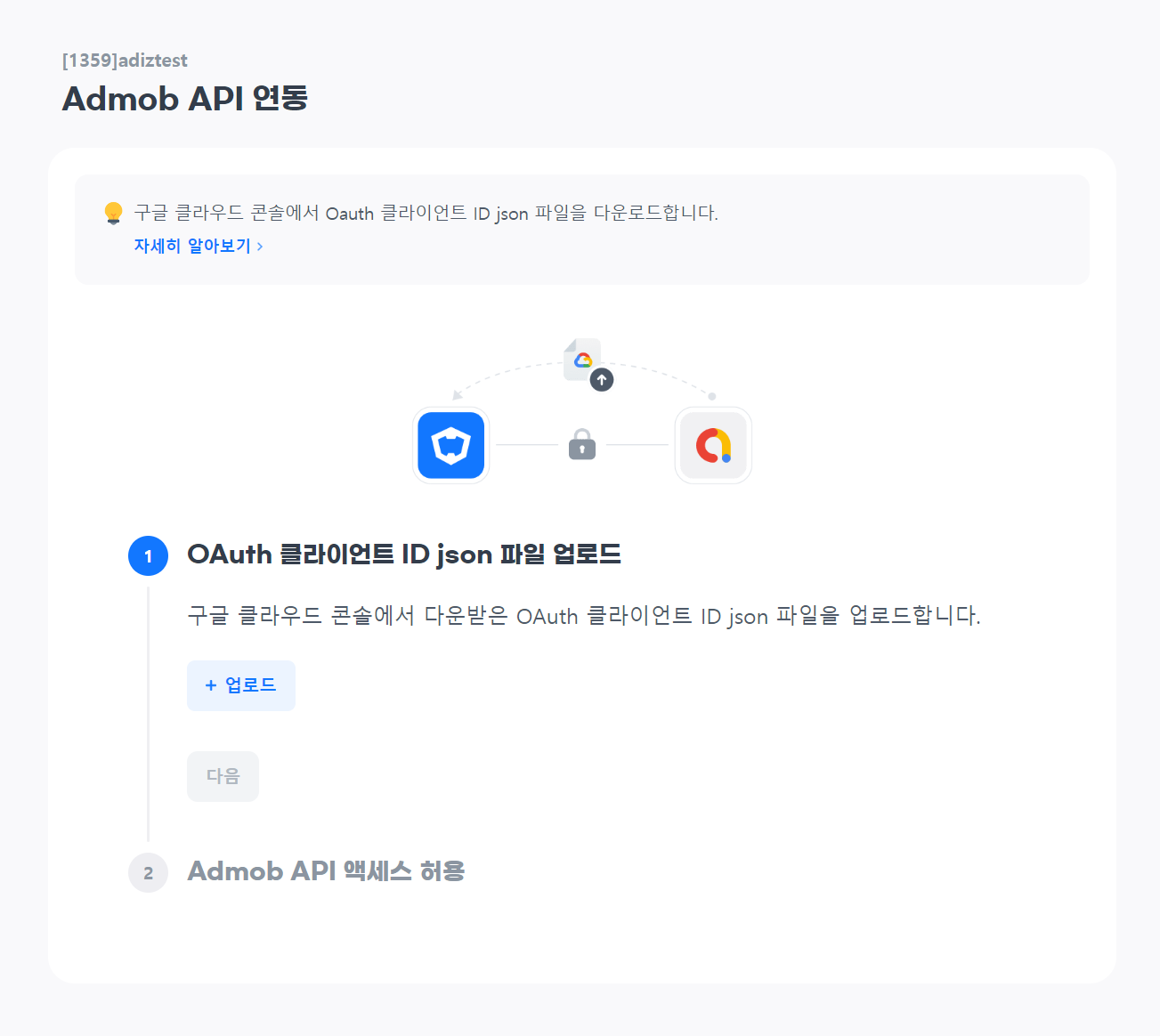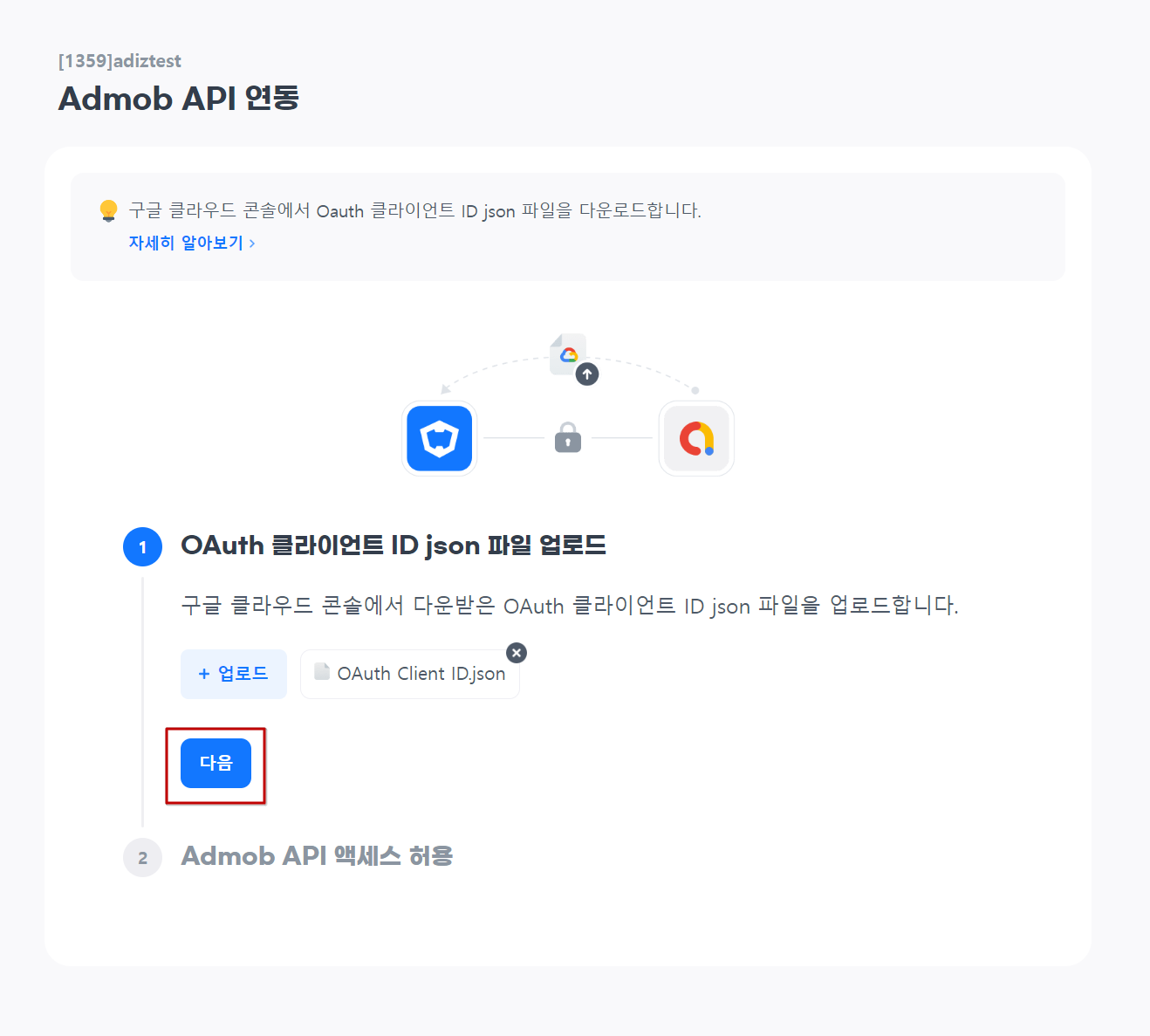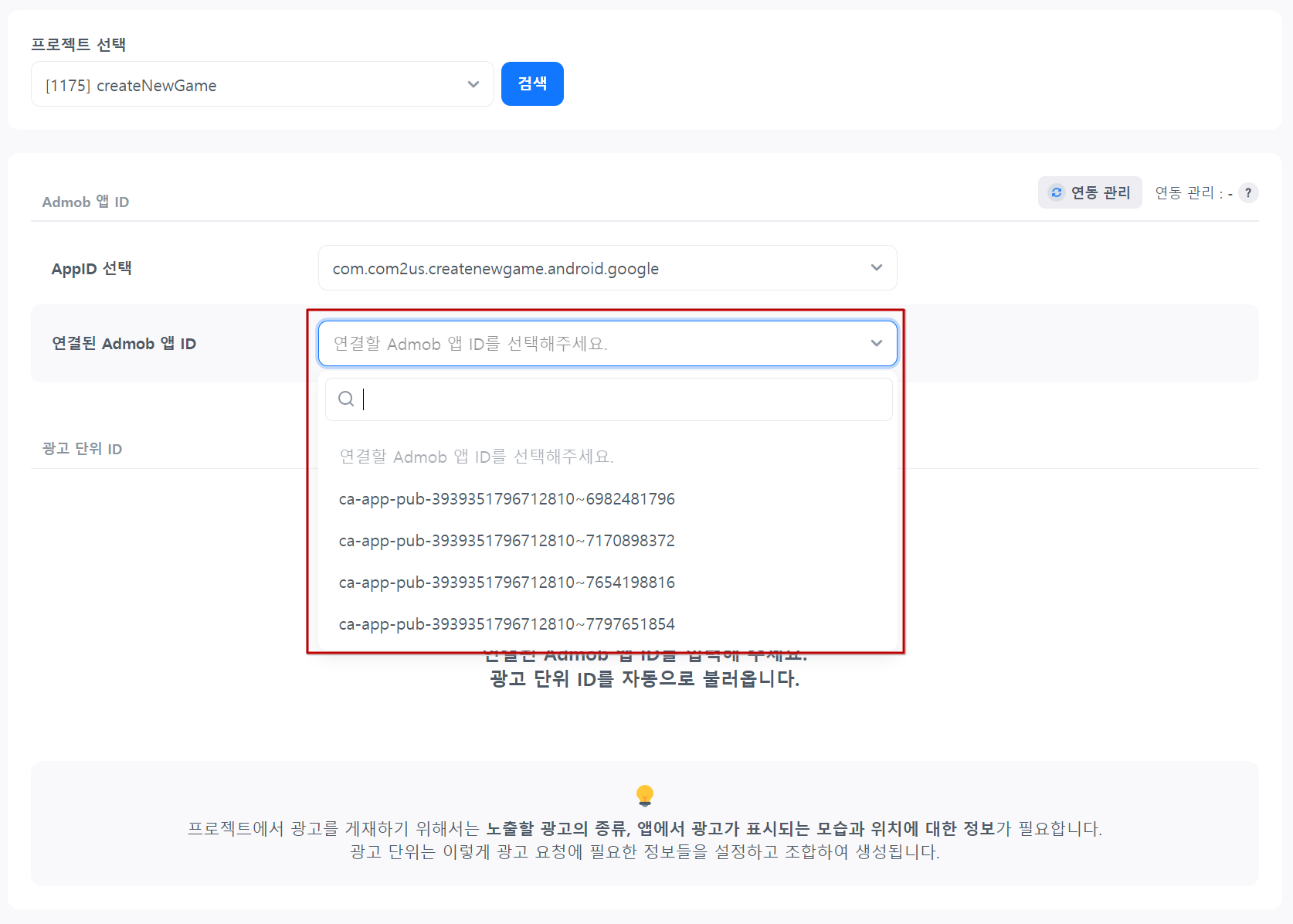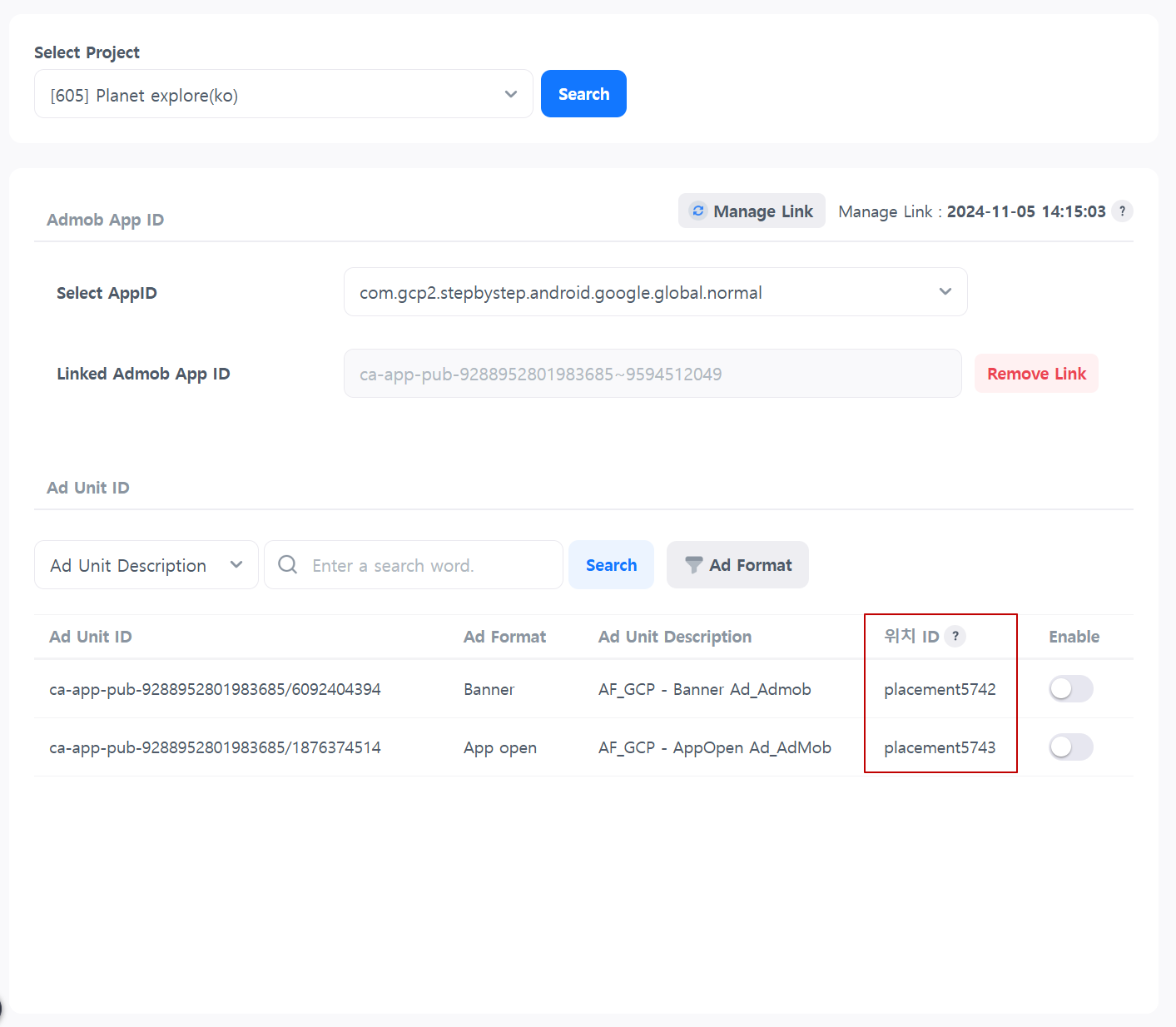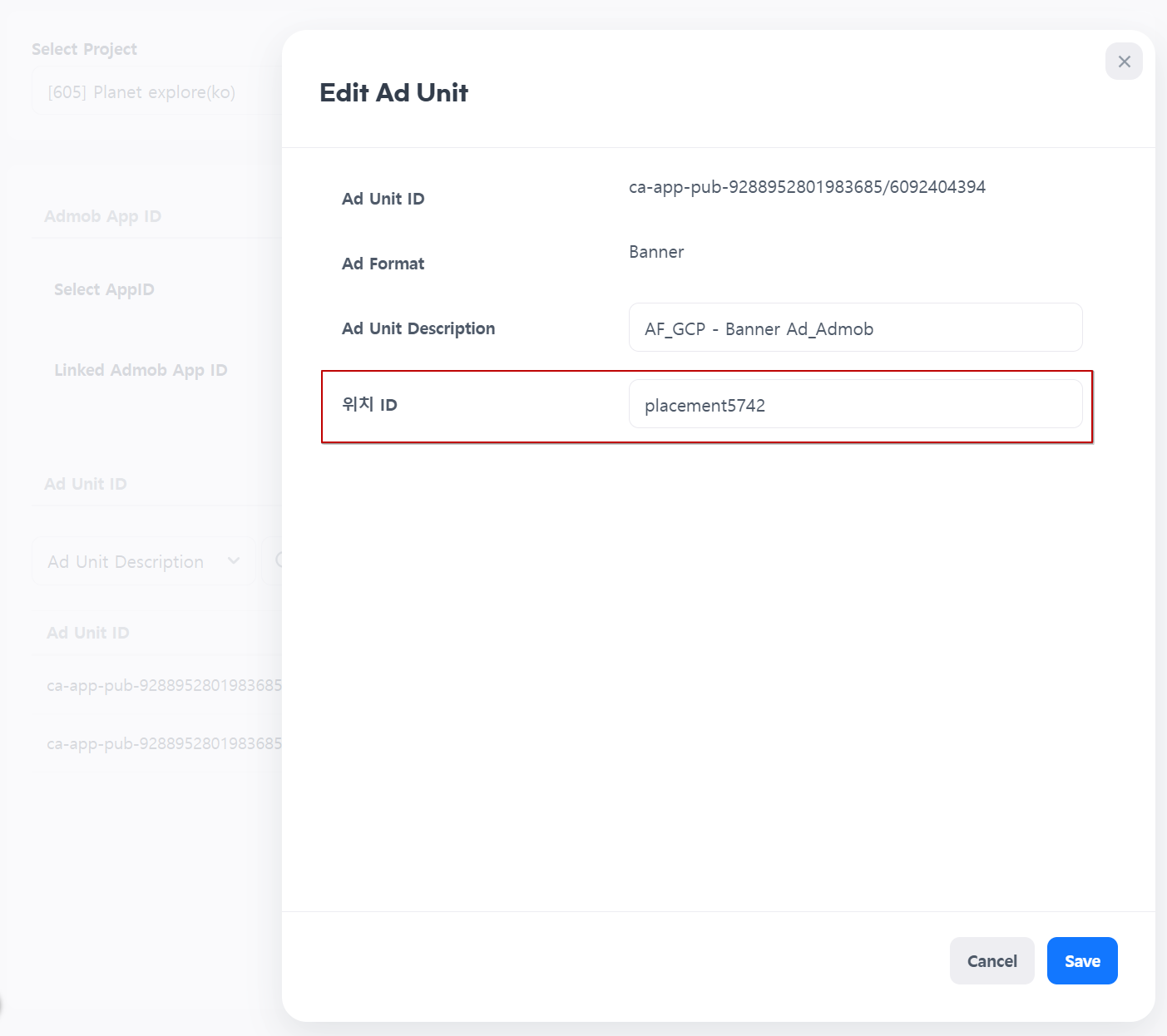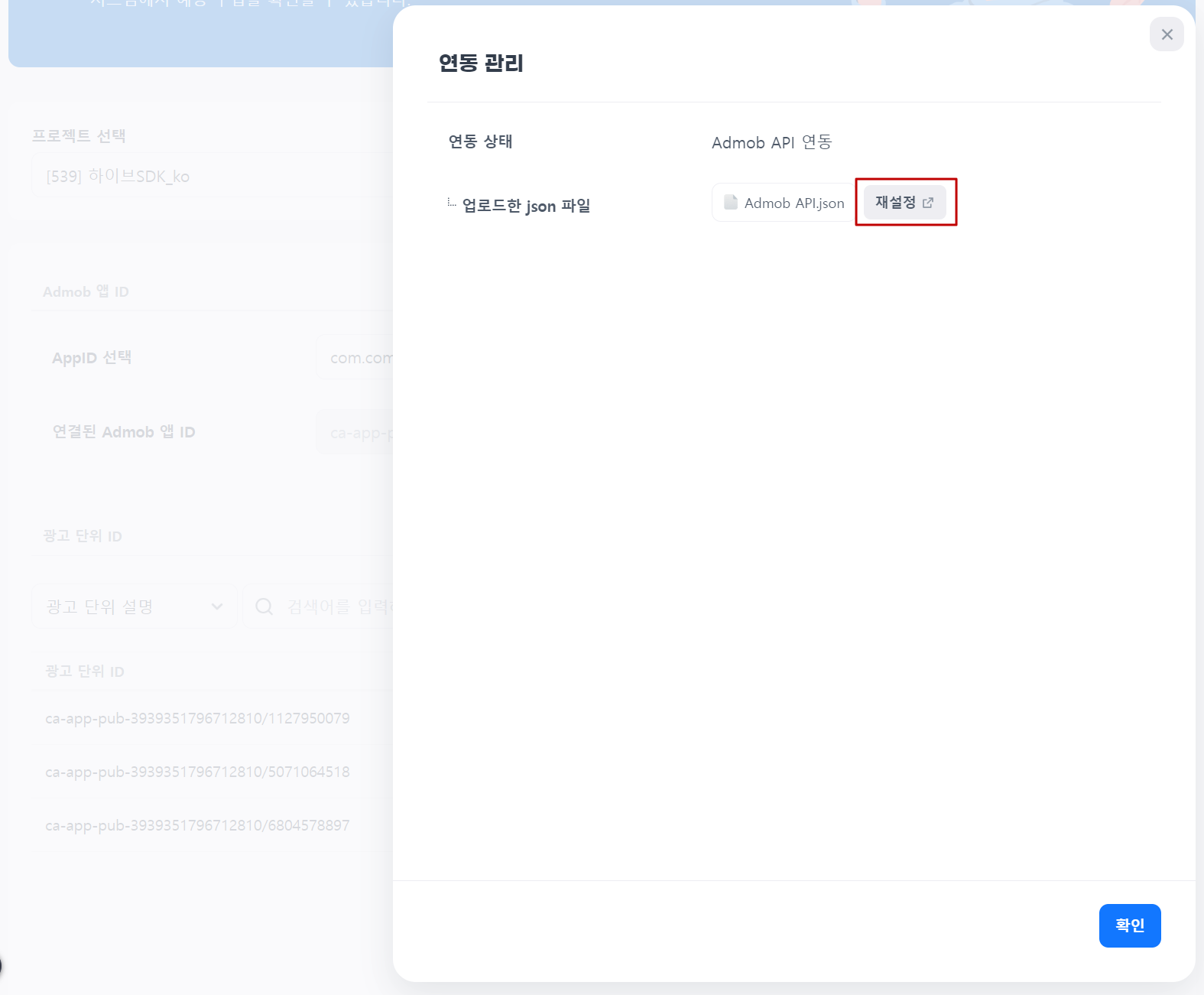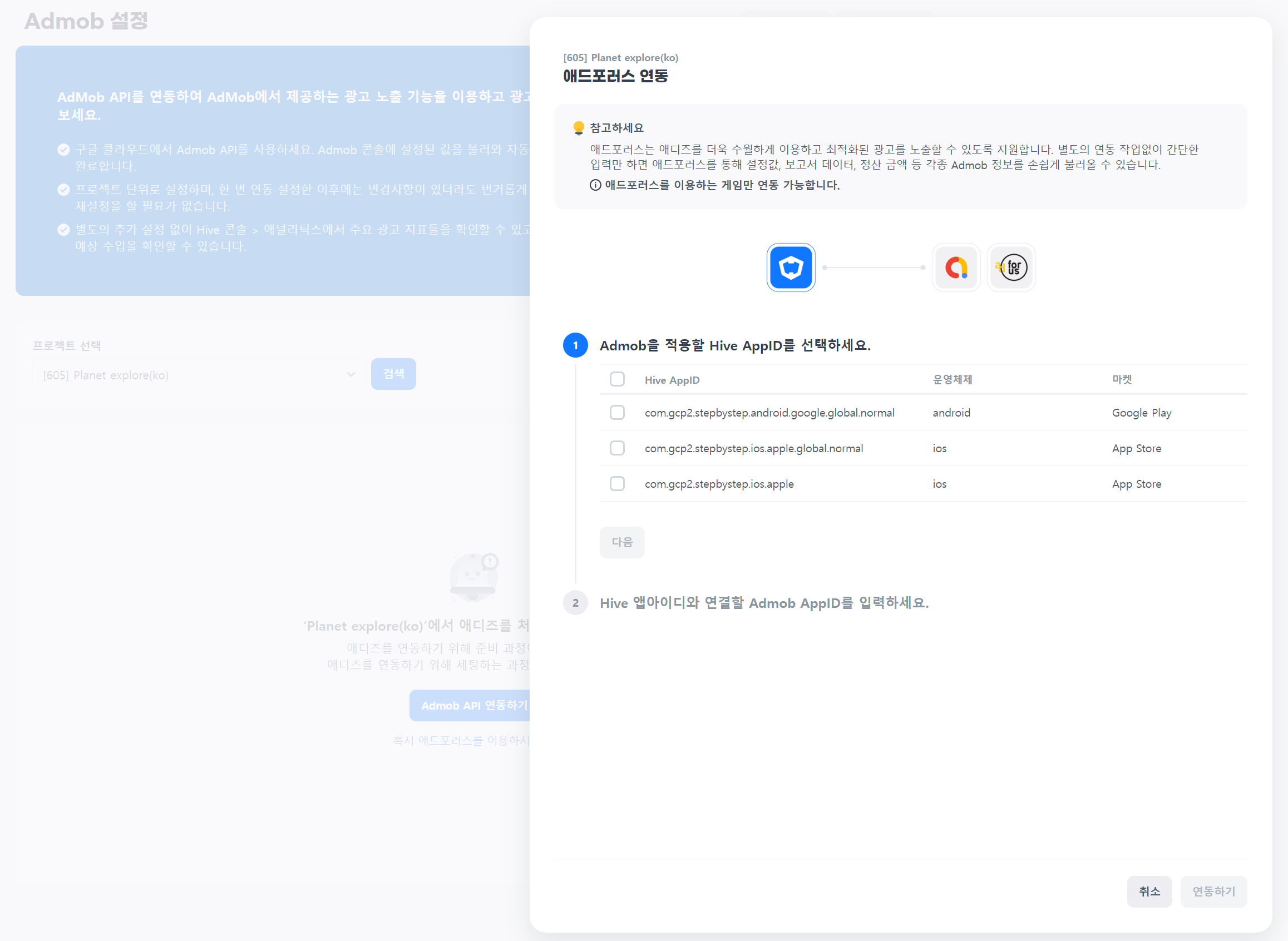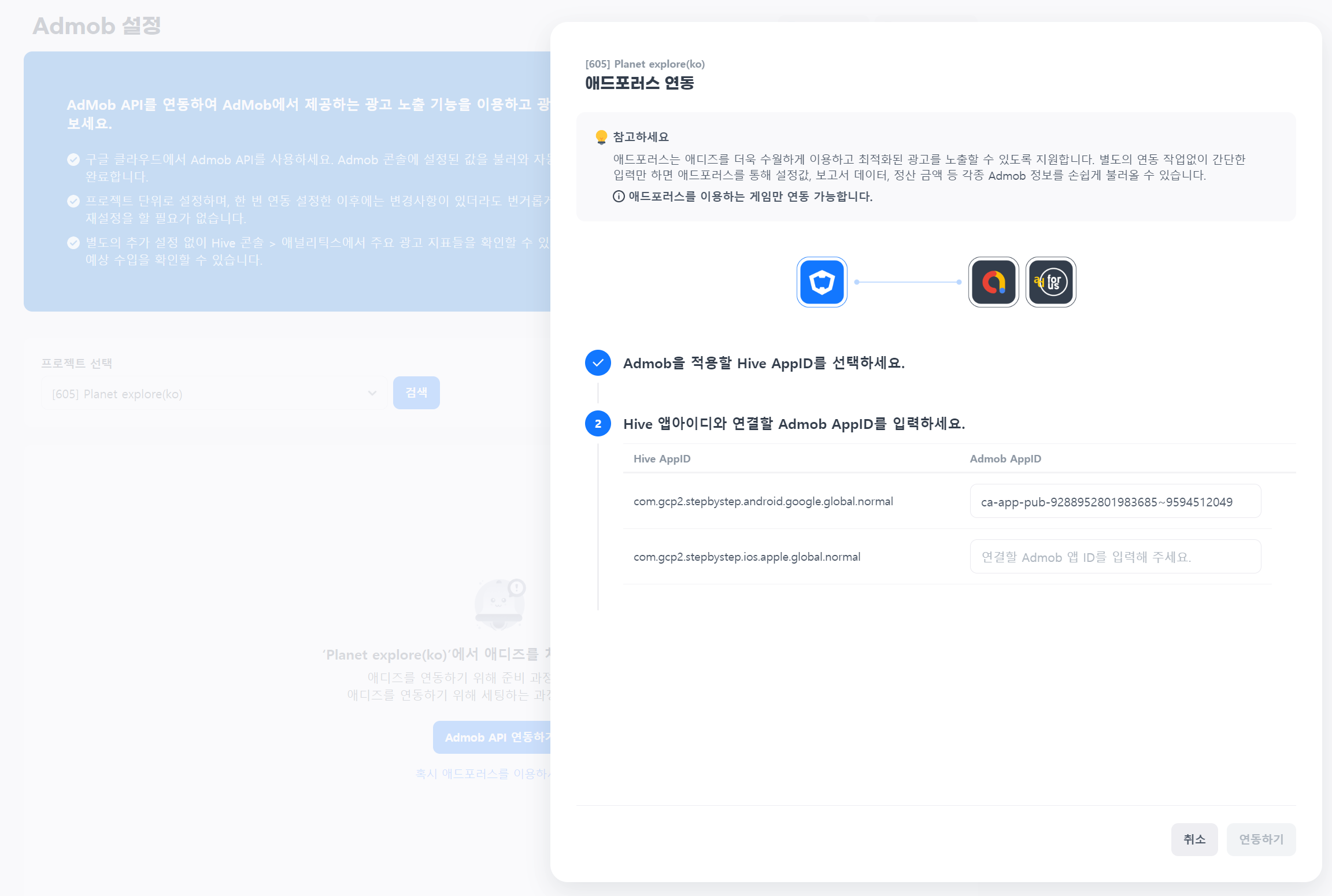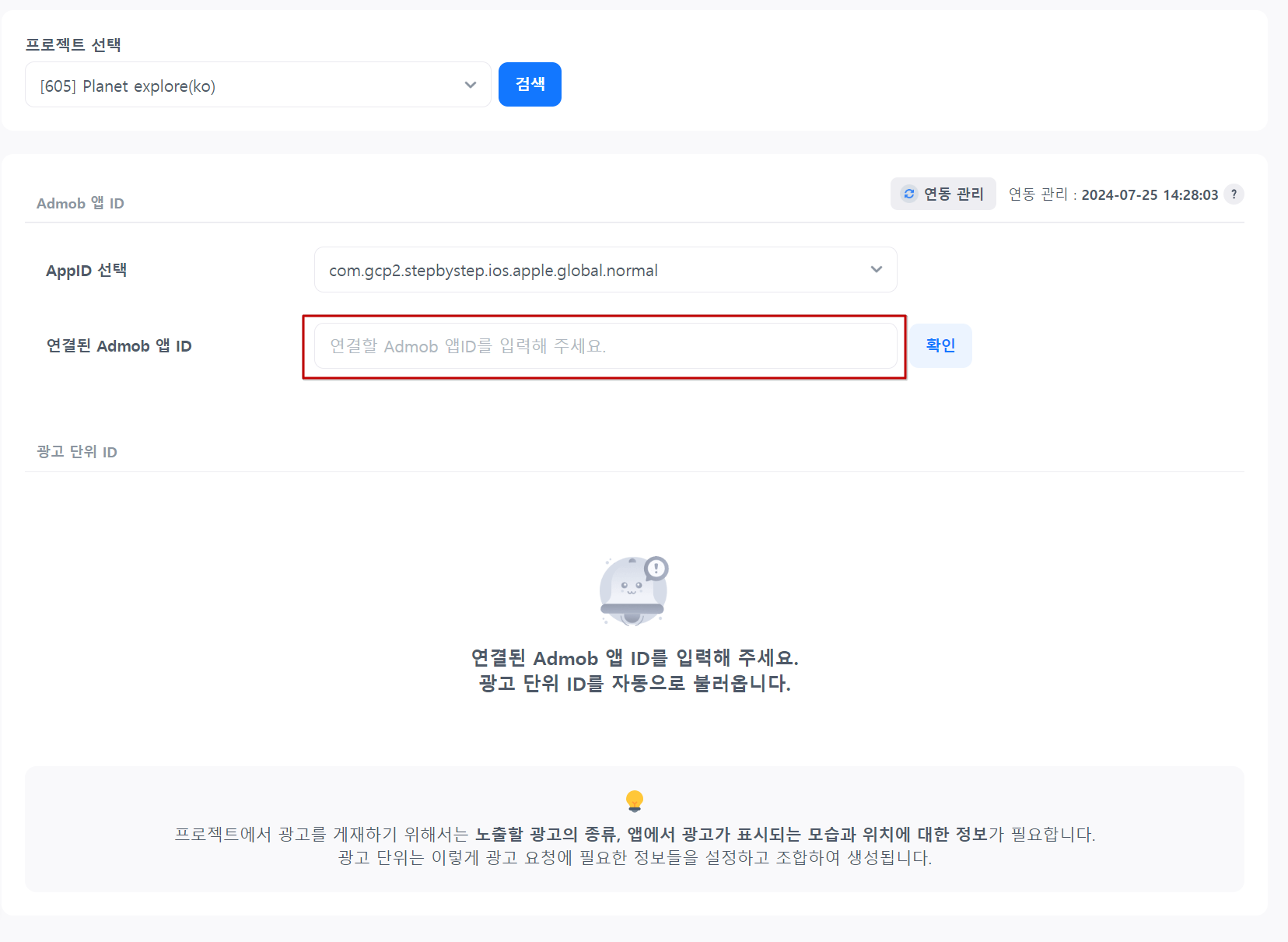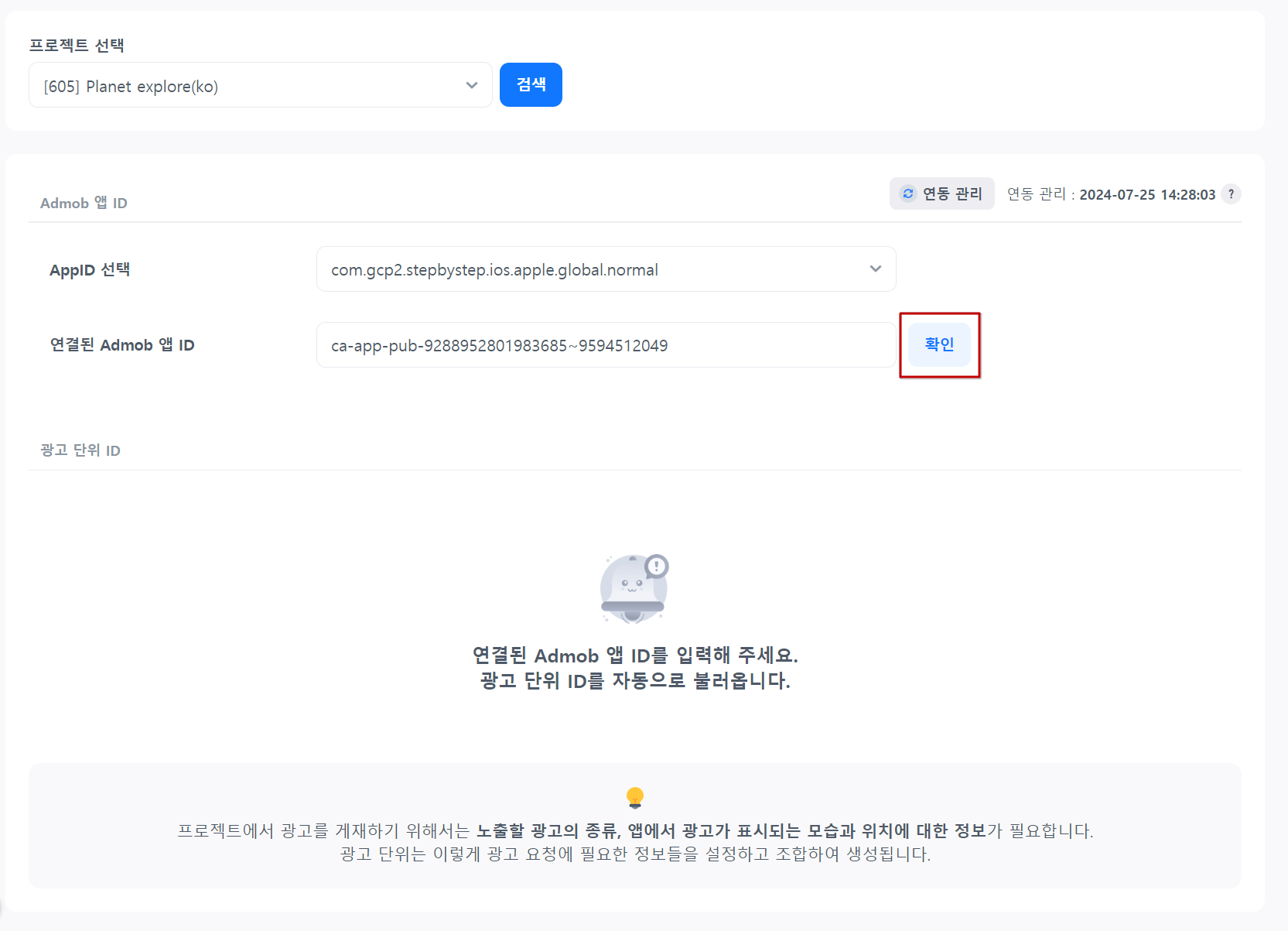Admob setting
Prepare Admob data for entry¶
- Please log in at https://apps.admob.com.
- Is the app you want to use registered? Please add the app if it is not already registered.

- After you've registered your app, you'll need to generate an ad unit ID. Please generate an ad unit ID by selecting the ad format that will appear on your app.
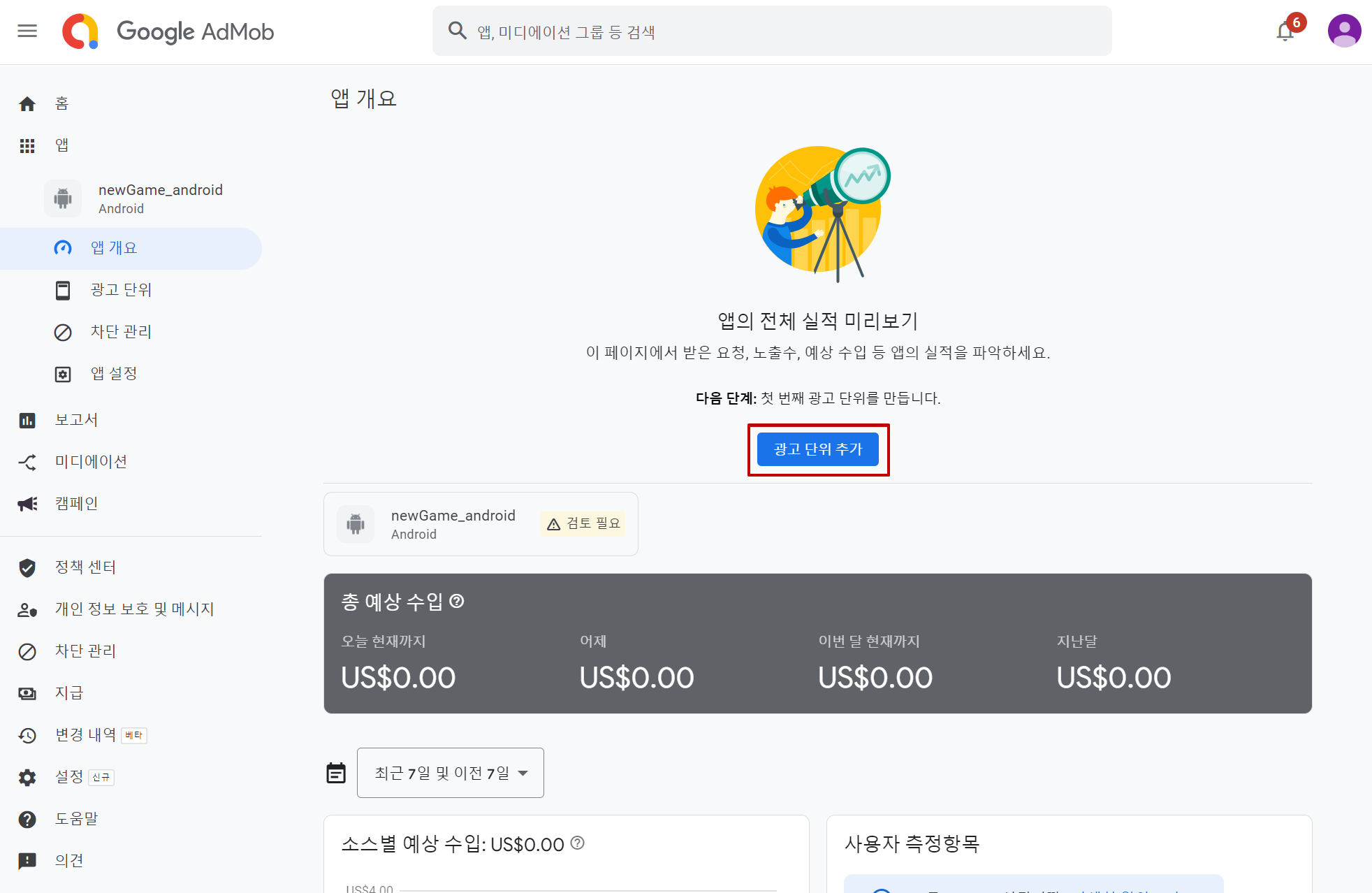 (For example, there is a game called 'newGame_android.' Let's make a banner ad unit that will appear in the 'newGame_android' game.)
(For example, there is a game called 'newGame_android.' Let's make a banner ad unit that will appear in the 'newGame_android' game.) 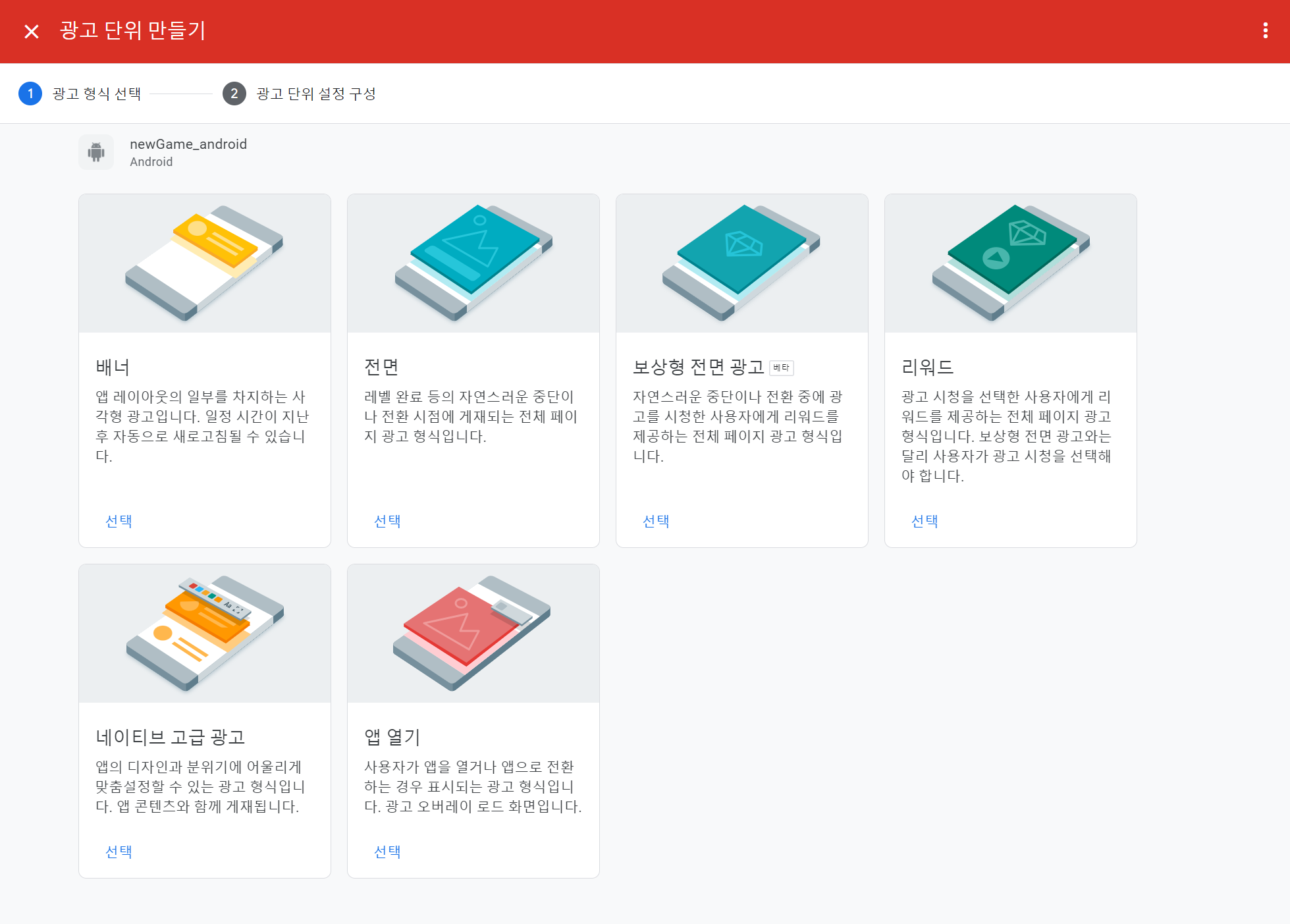
- You now have all of the Admob information to enter after creating your ad unit ID. Please go to the Hive Console.
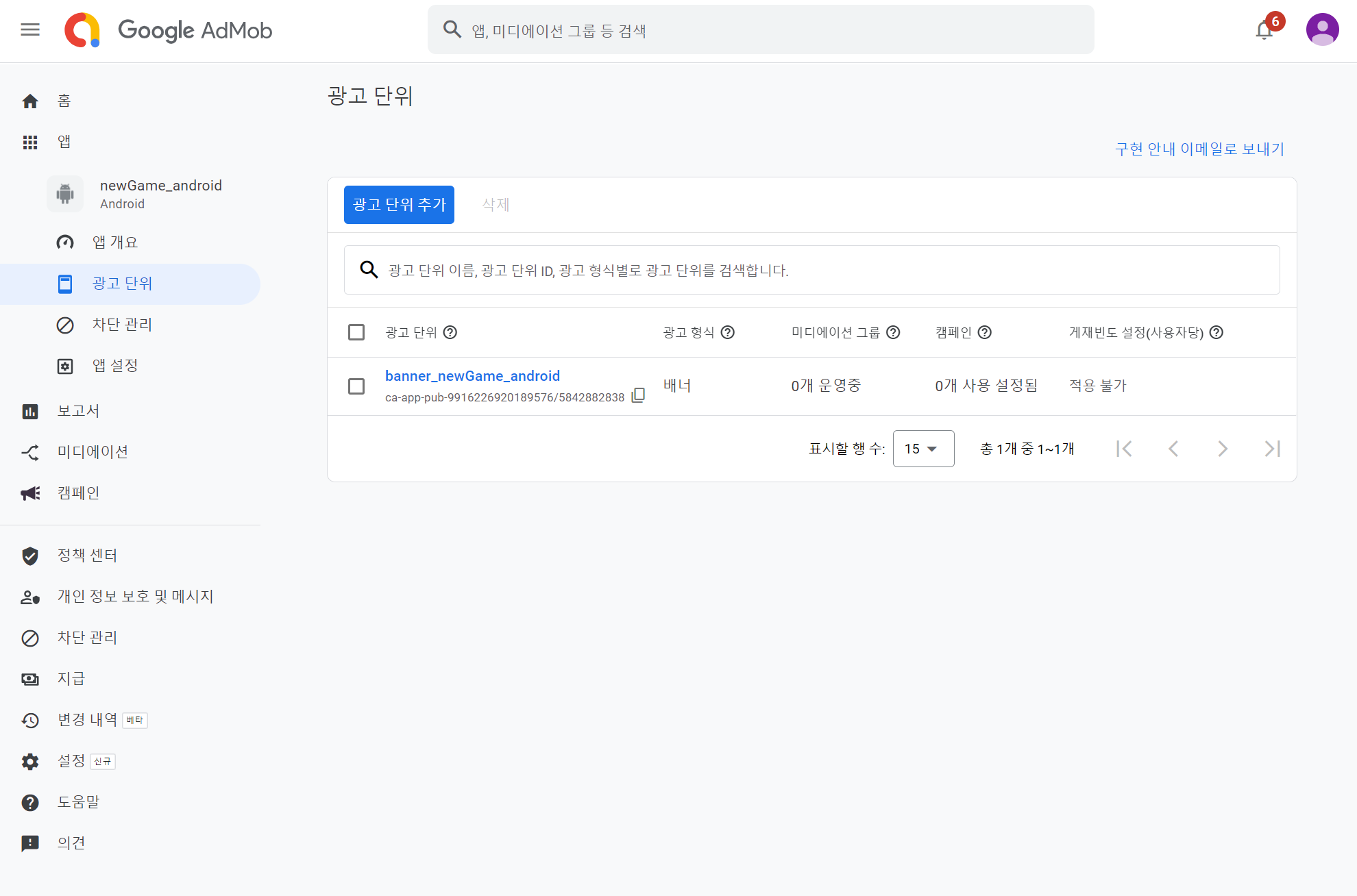
Warning
Admob apps are made for each app ID. If an Android/iOS app ID already exists for one game, Admob requires the creation of two apps.
Link AdMob API¶
Start¶
- Go to Hive Console > Adiz > AdMob Settings. Select the game you want to sync with, and click the "Link AdMob API" Button.
- Upload the OAuth client ID json file downloaded from the Google Cloud Console. If you do not have an OAuth client ID json file, prepare it by following the guide. (Go to Create OAuth client ID)
- If you've uploaded the json file, click Next.
- Finally, click the "Allow Access" Button. After logging in to Google, set it to allow AdMob API access.
???+ warning You must log in with the same account used in the Google Cloud Console.
- Once you allow access, the linking is complete. You're not set to use AdMob. Go to the management page and start using AdMob.
AdMob management information¶
After the linking is complete, you can check the AdMob App ID and ad unit ID imported from the AdMob console.
Connect Hive App ID and AdMob App ID
Once the AdMob API linking is complete, you can check the AdMob App ID in the Hive console in your account.
First, select the Hive App ID, then click "Connected AdMob app ID". The imported AdMob App ID will be displayed. Select the AdMob App ID to be linked to the Hive App ID.
The ad unit ID linked to the selected AdMob App ID will be automatically displayed. 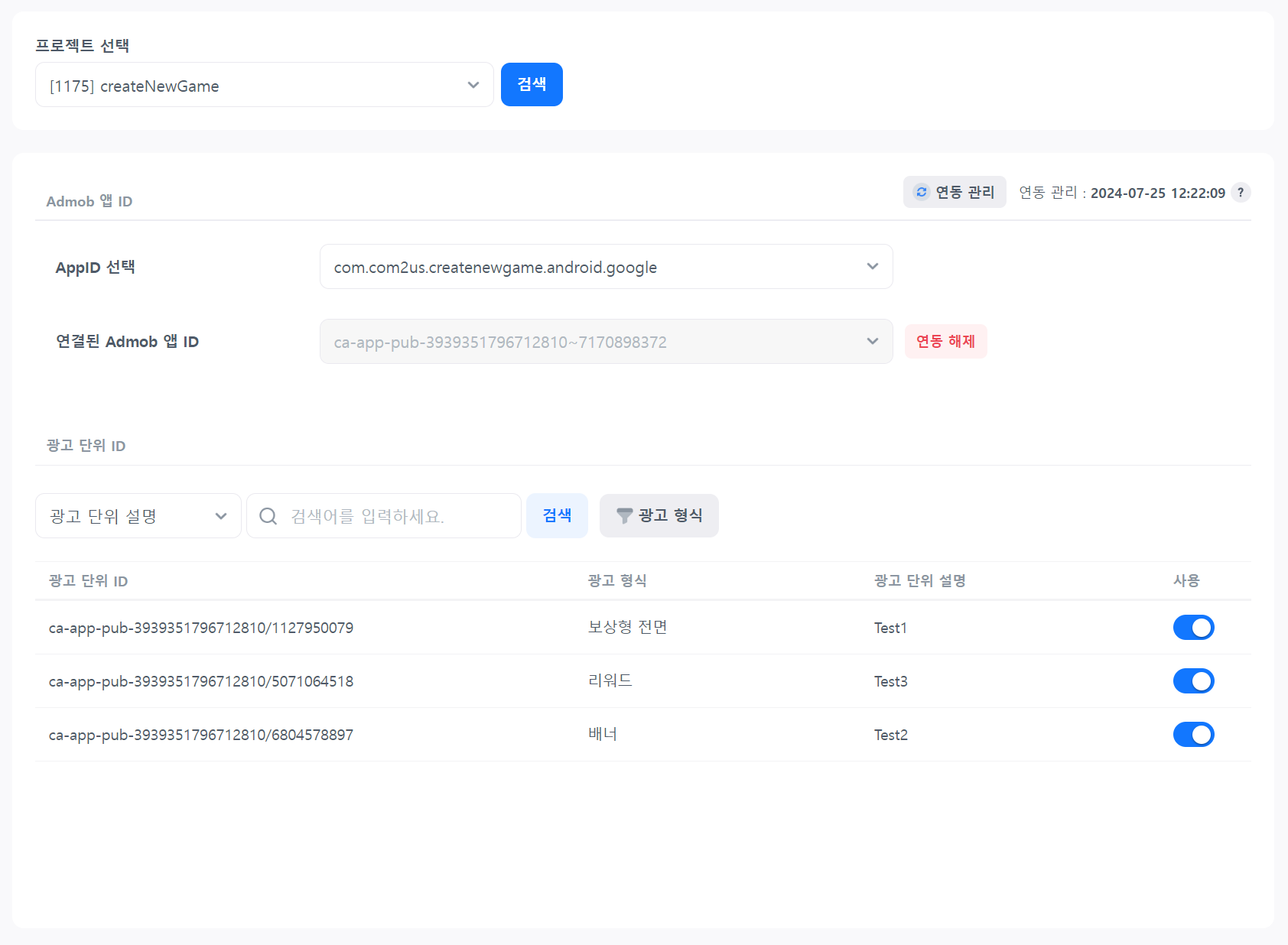
Note
If the AdMob App ID is not displayed after linking, please wait for about 1 minute.
Remove Link
You can disconnect the Hive App ID and AdMob App ID. If you want to link with another App ID, please remove the existing link first.
You can remove the link by clicking the "Remove Link" Button. When the AdMob App ID link is removed, the link with the ad unit ID will also be removed. 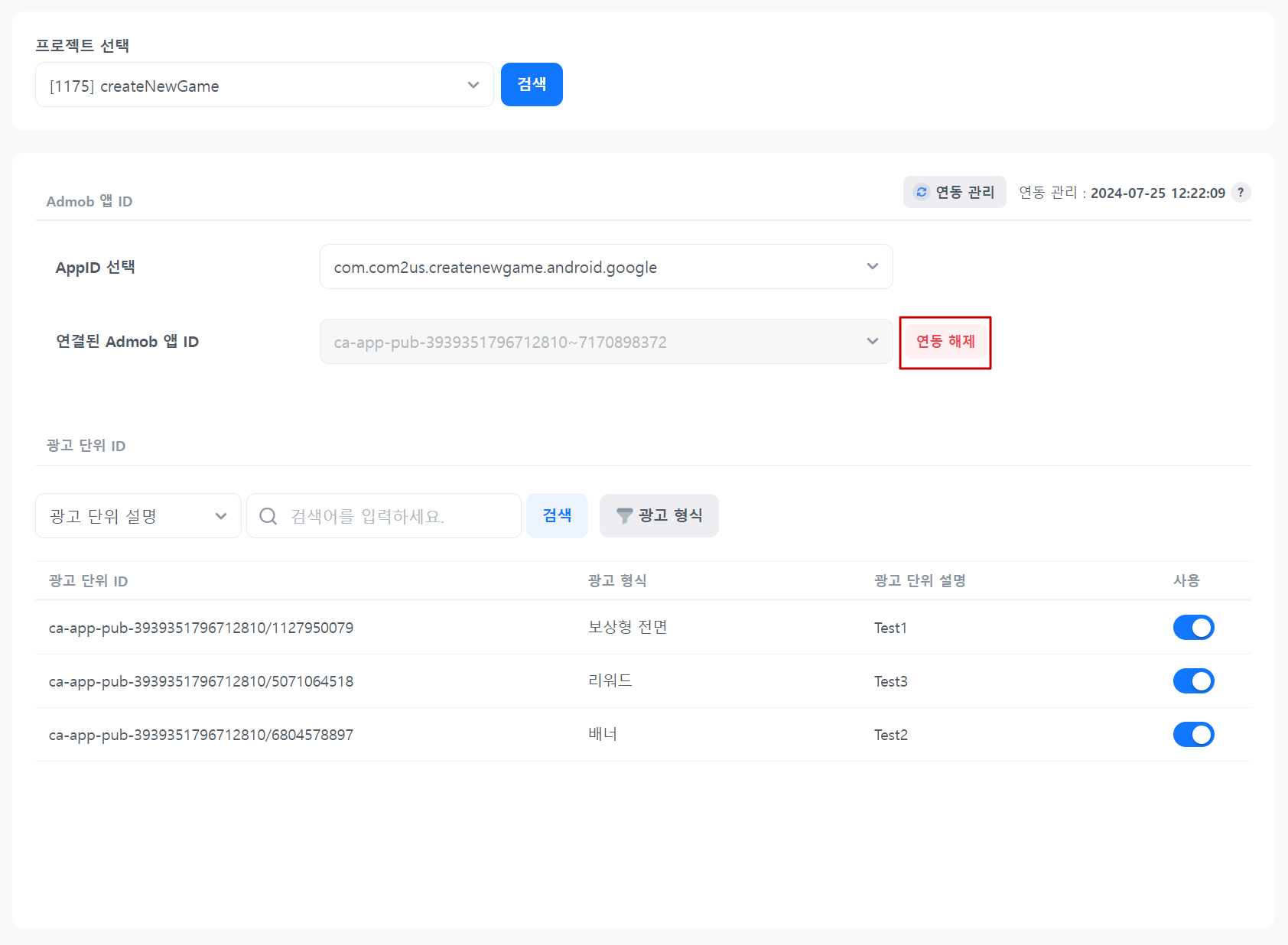
The removed Hive App ID can be linked with another AdMob App ID. 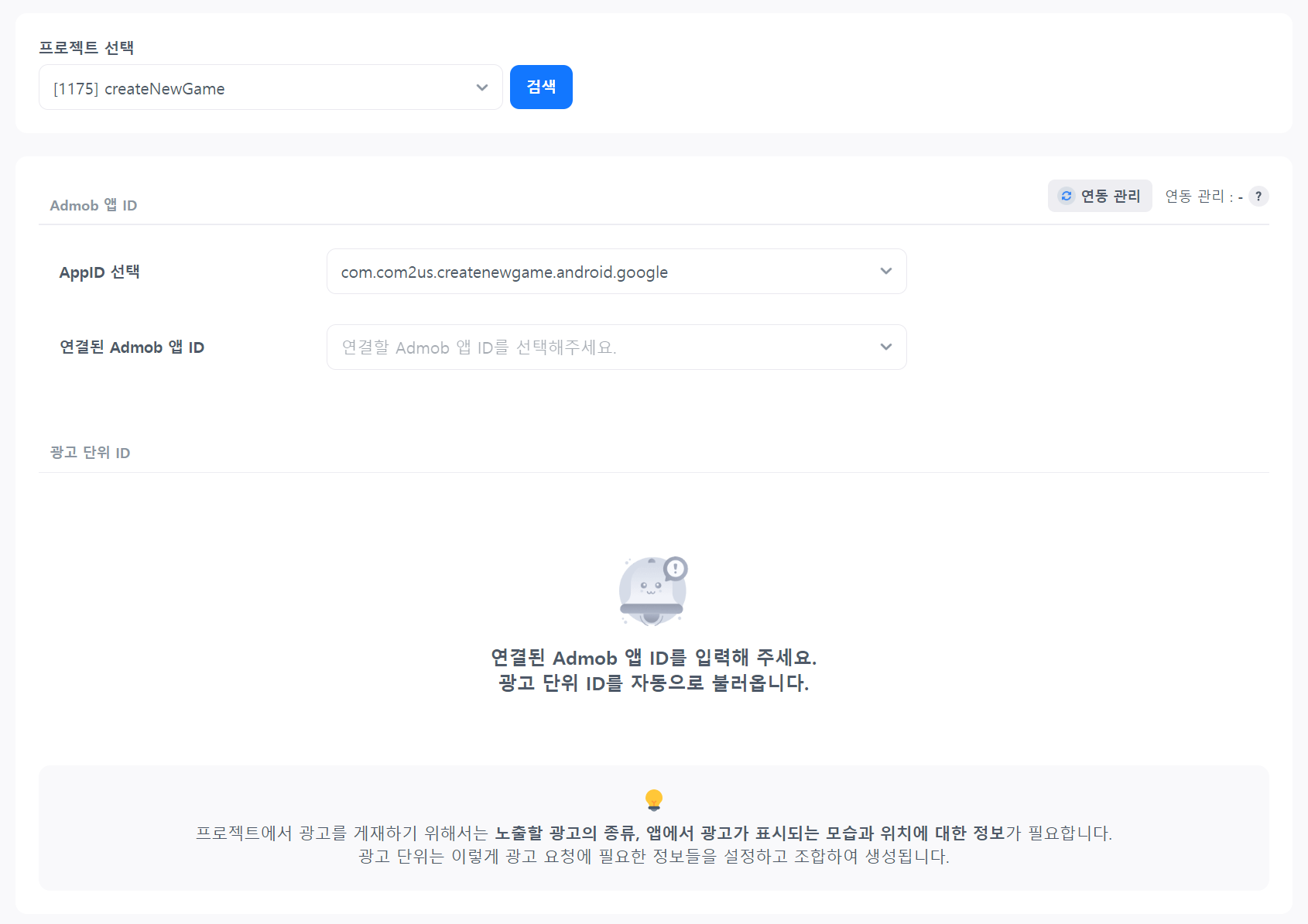
Ad Unit ID Usage Settings
To remove the ad unit ID, turn off the "Use" toggle. You cannot request ads with a disabled ad unit ID. To reactivate it, change it to the "Use" status.
Placement ID
The location ID is a value that can easily replace the ad unit ID. Set a location ID that’s easy to recognize. The SDK development team can use this location ID to call ads.
Creating the OAuth client ID in the Google cloud console¶
- Creating a Project
- AdMob API Usage Settings
- Creating User Authentication Information (Configuring the Consent Screen)
- Create User Authentication Information (Oauth Client ID)
- Creating a Project Go to https://console.cloud.google.com/ and log in. You must first create a project to manage Google services, user credentials, payments, APIs, etc.
- AdMob API Usage Settings If you have created a project, it is now time to set up the link with AdMob API. Search for admob in the search bar. If you see "AdMob API", click it.
- Creating User Authentication Information (Configuring the Consent Screen) If you are creating user authentication information for the first time, you must first set up the "Oauth consent screen". Click the "Configure Consent Screen" Button. ‘Clicking the "Create User Authentication Information" Button will also automatically take you to the Oauth consent screen settings page.
- Create User Authentication Information (Oauth Client ID) Go to API & Services > User Authentication Information > Create User Authentication Information > Oauth client ID.
Click "Create or Select a Project". If you have already created a project, click "Next".

Click "New project".
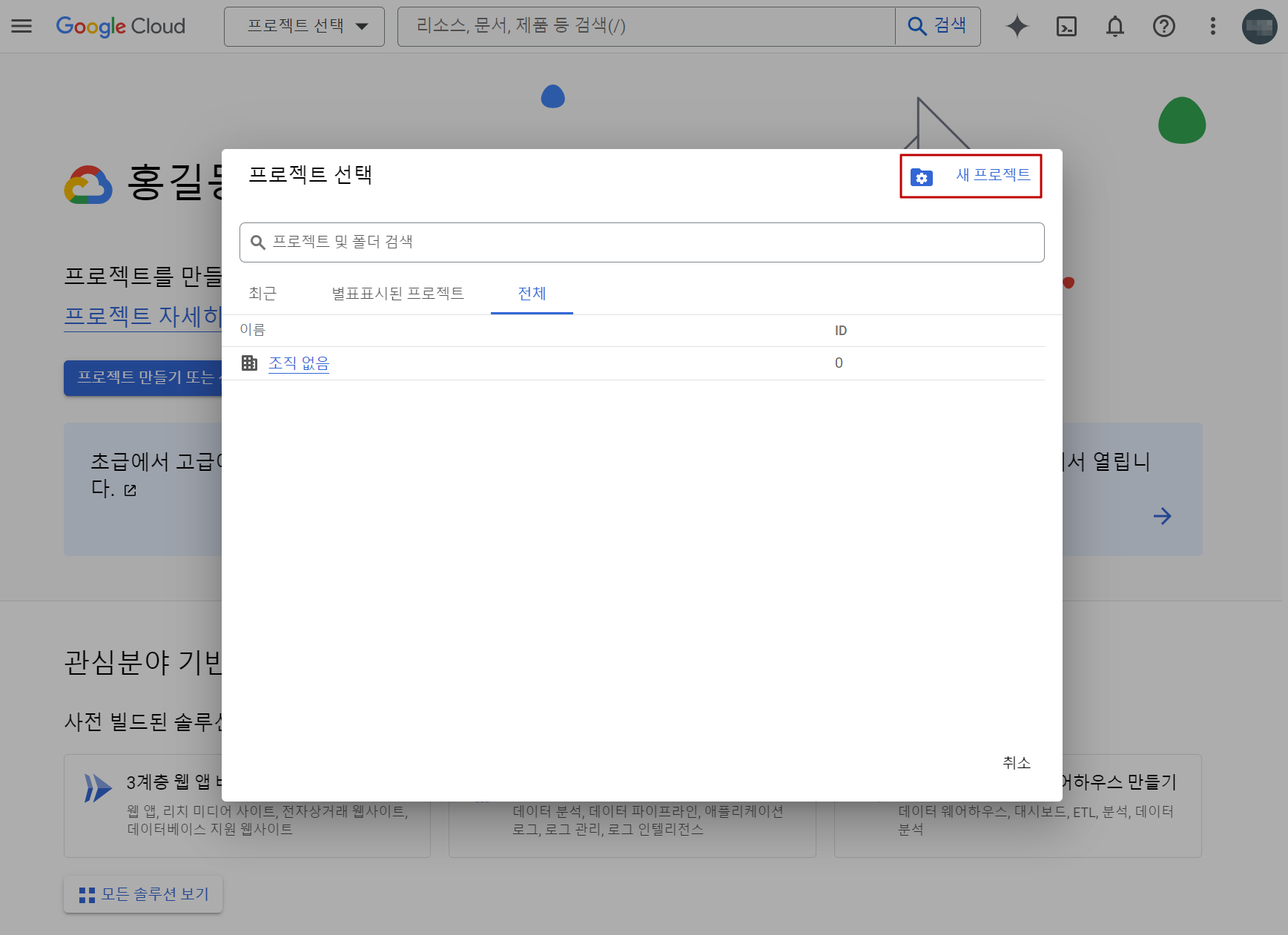 Enter the project name and set the project location. You can also use the automatically set name and location.
Enter the project name and set the project location. You can also use the automatically set name and location. Click "Create" to create a new project.
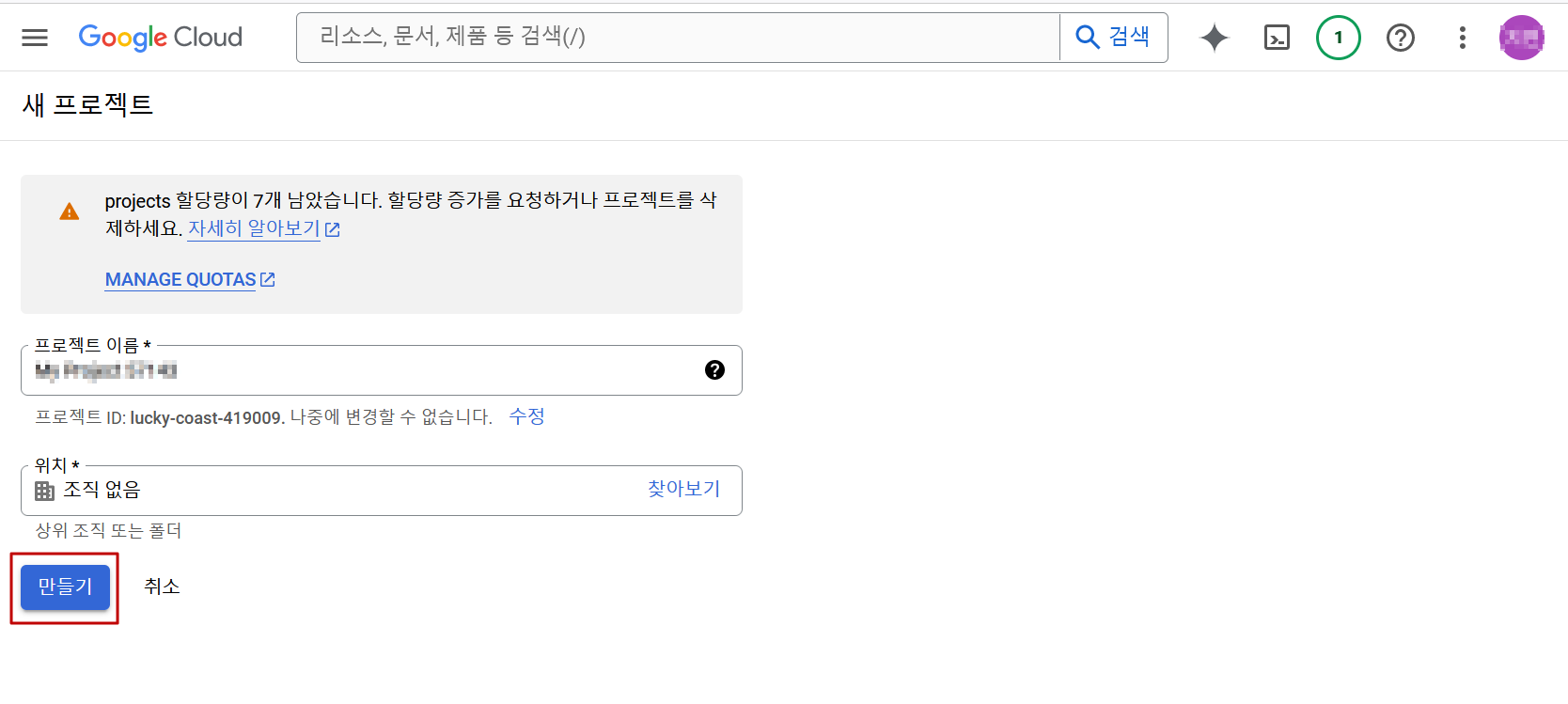 A new project has been created. Please proceed with enabling "AdMob API".
A new project has been created. Please proceed with enabling "AdMob API". 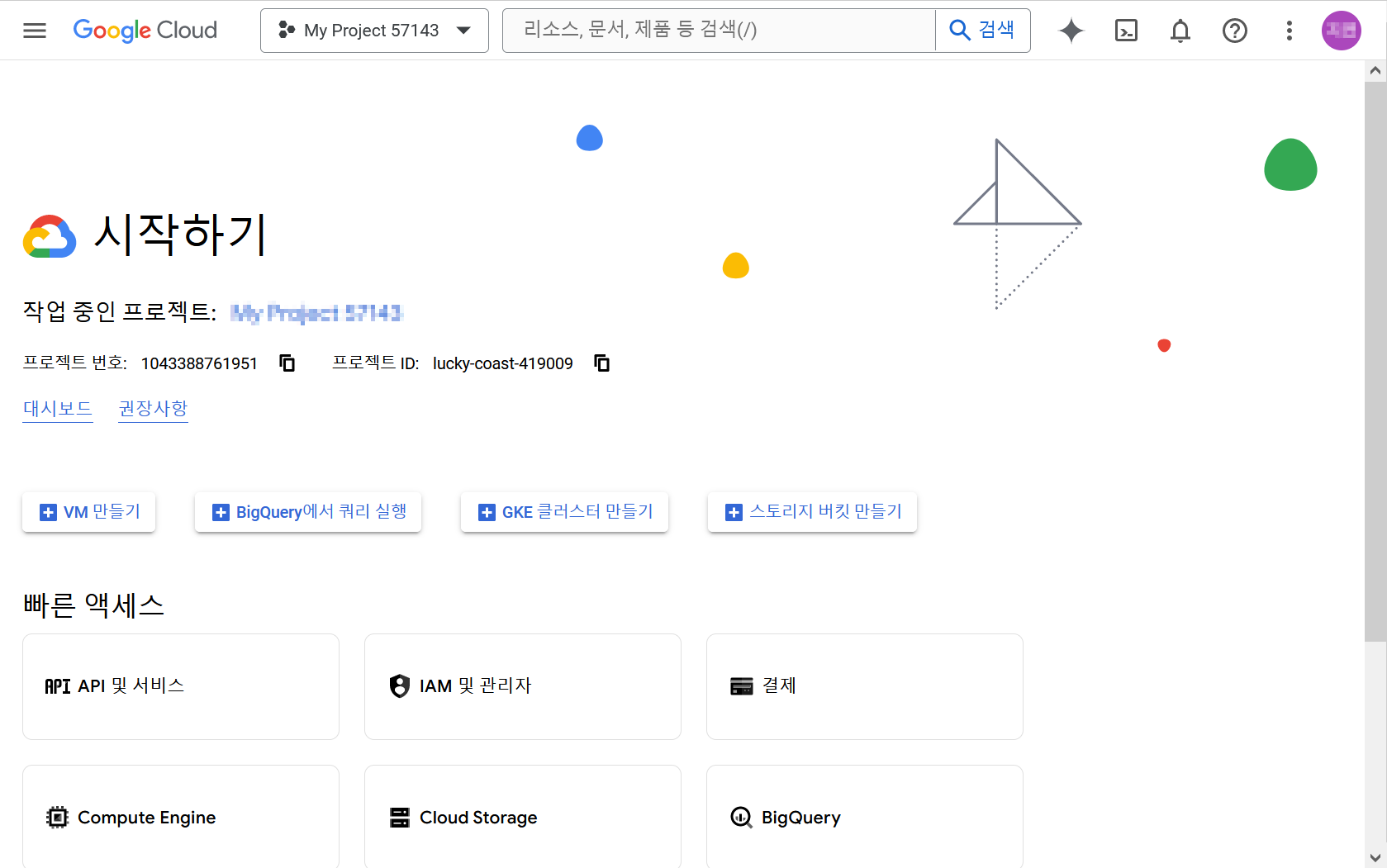
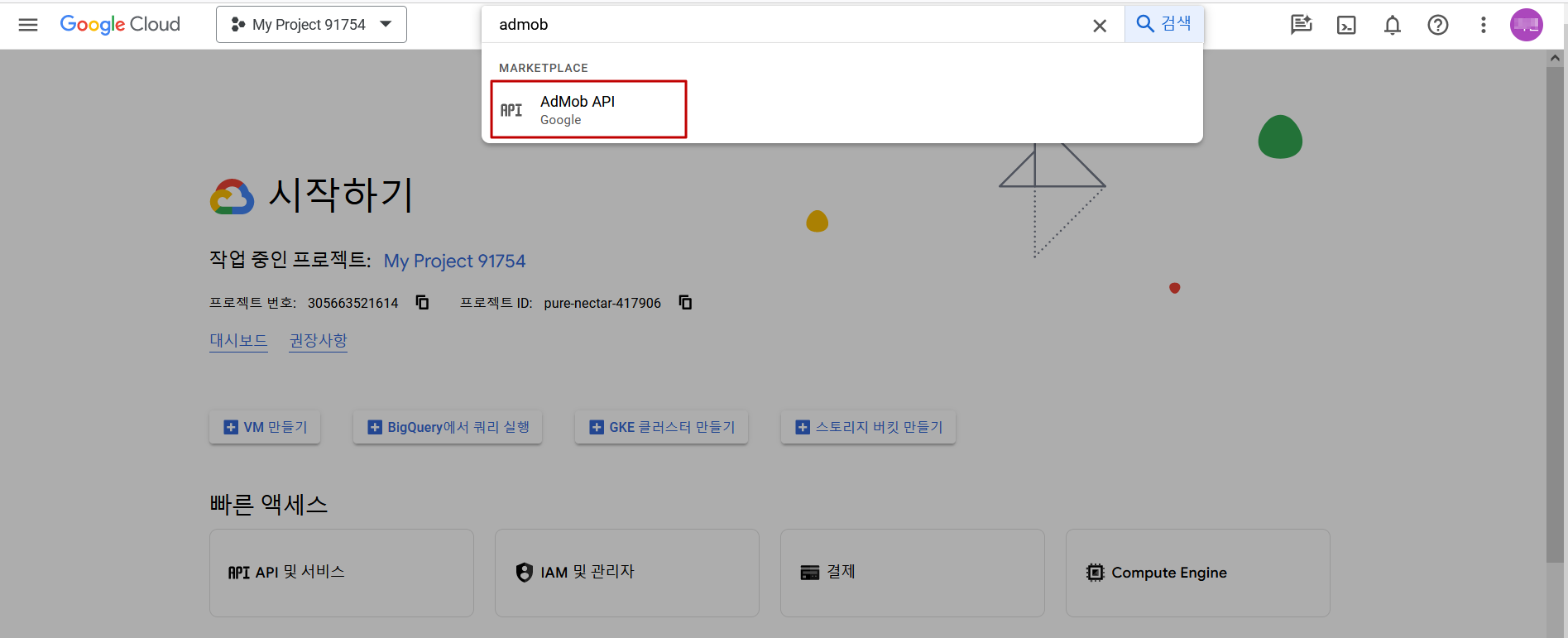
You will be taken to the AdMob API Link Settings Page. Click "Use".

Once it's been set to use, you will automatically be taken to the AdMob API management page. Now, you will need user authentication information to use AdMob API. Please set it up according to the instructions.
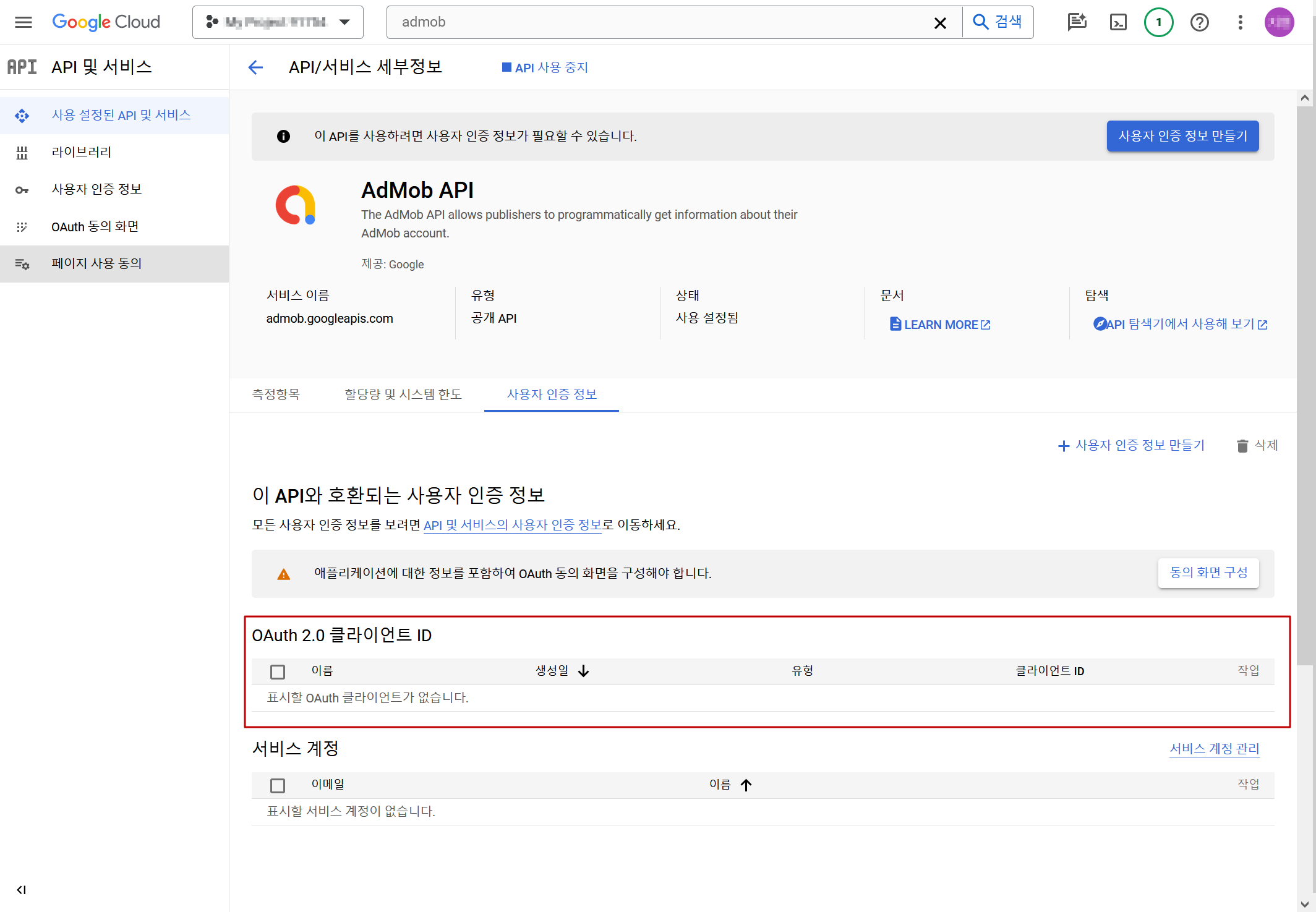
If you have an Oauth 2.0 client ID, click the download button to save the file.

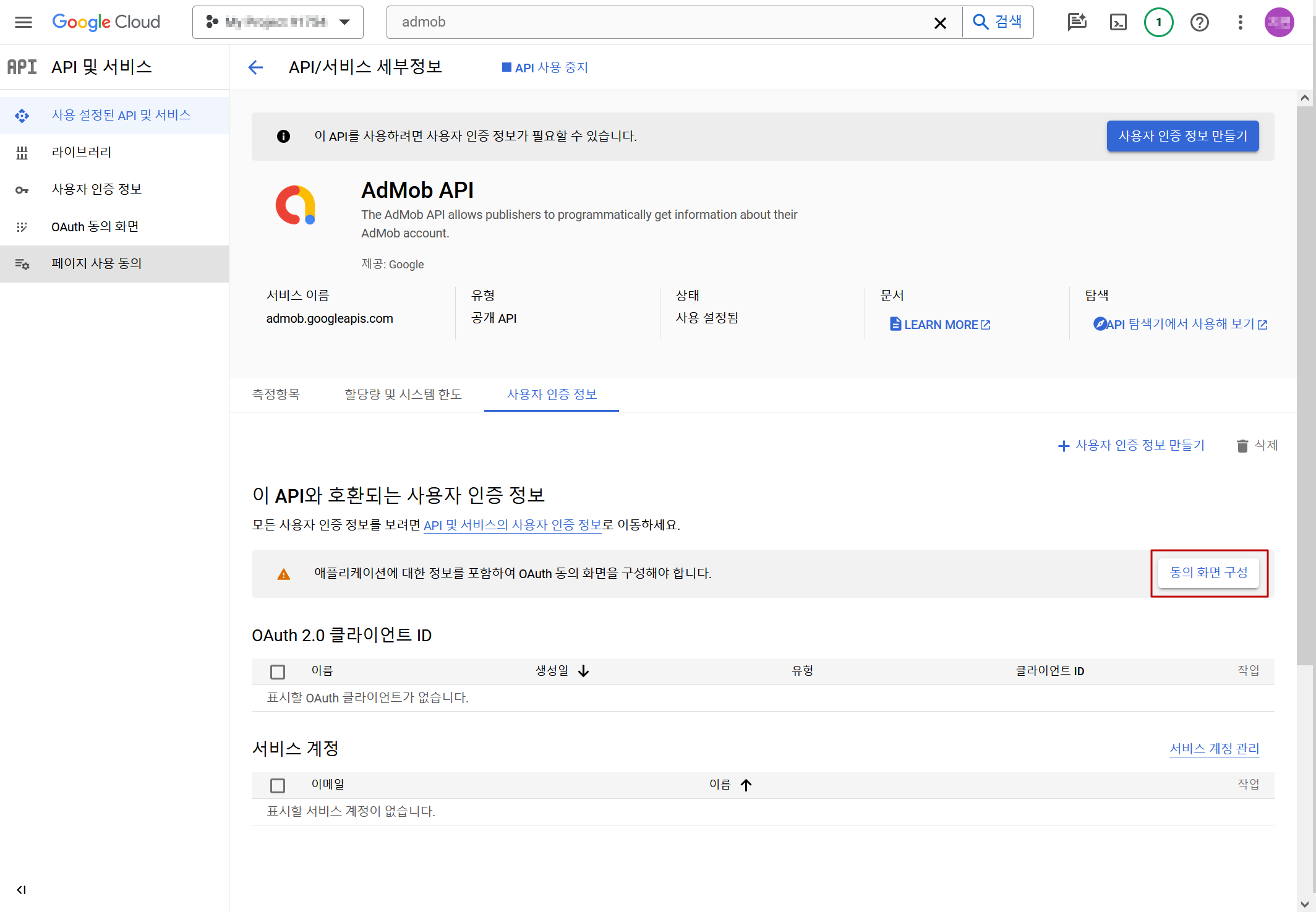 Select "External" for User Type and click "Create".
Select "External" for User Type and click "Create". 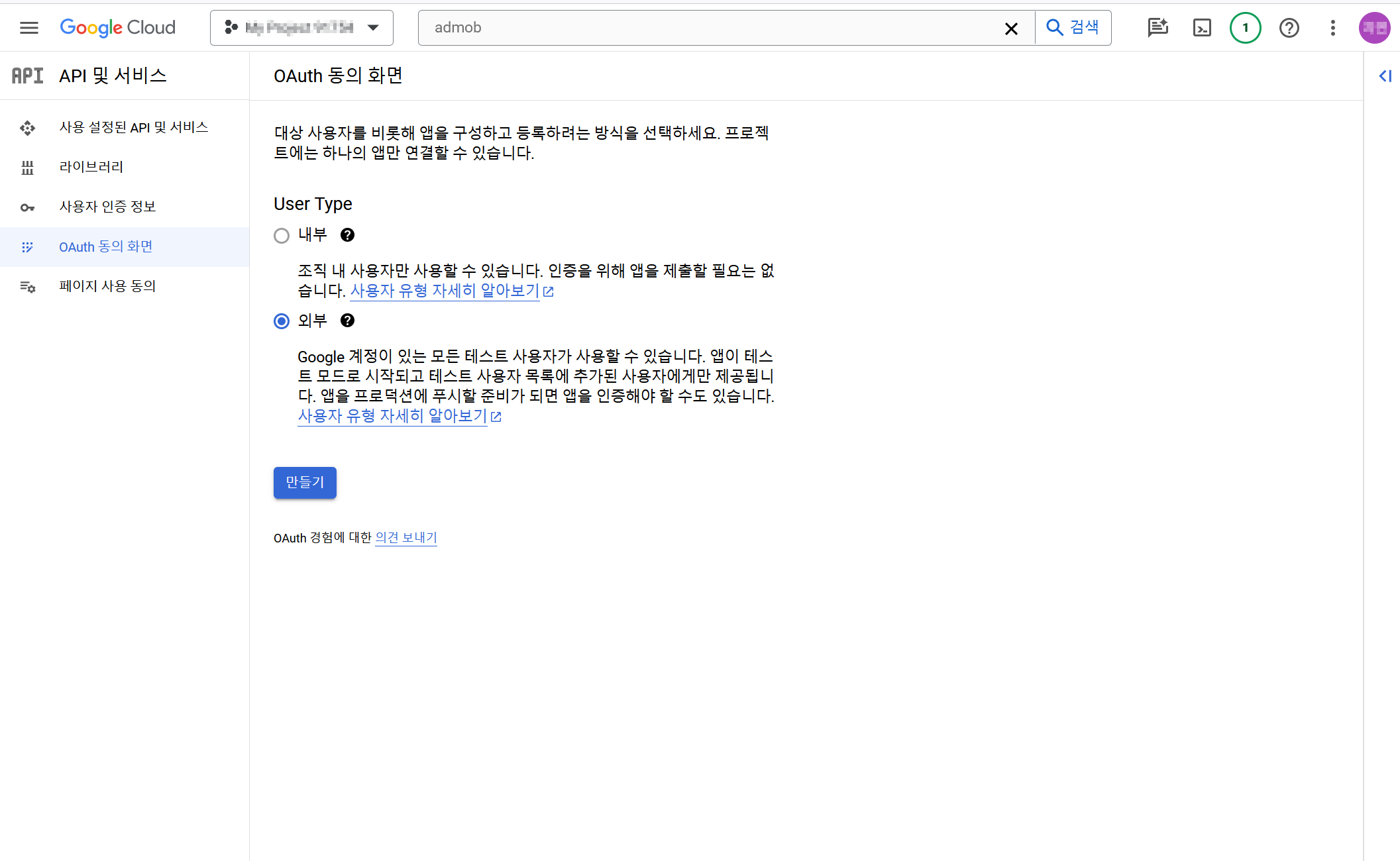 There are 4 steps to set up the consent screen. In step 1, enter the required information such as the app name/user support email/developer contact information. After entering, click "Save and Continue".
There are 4 steps to set up the consent screen. In step 1, enter the required information such as the app name/user support email/developer contact information. After entering, click "Save and Continue". 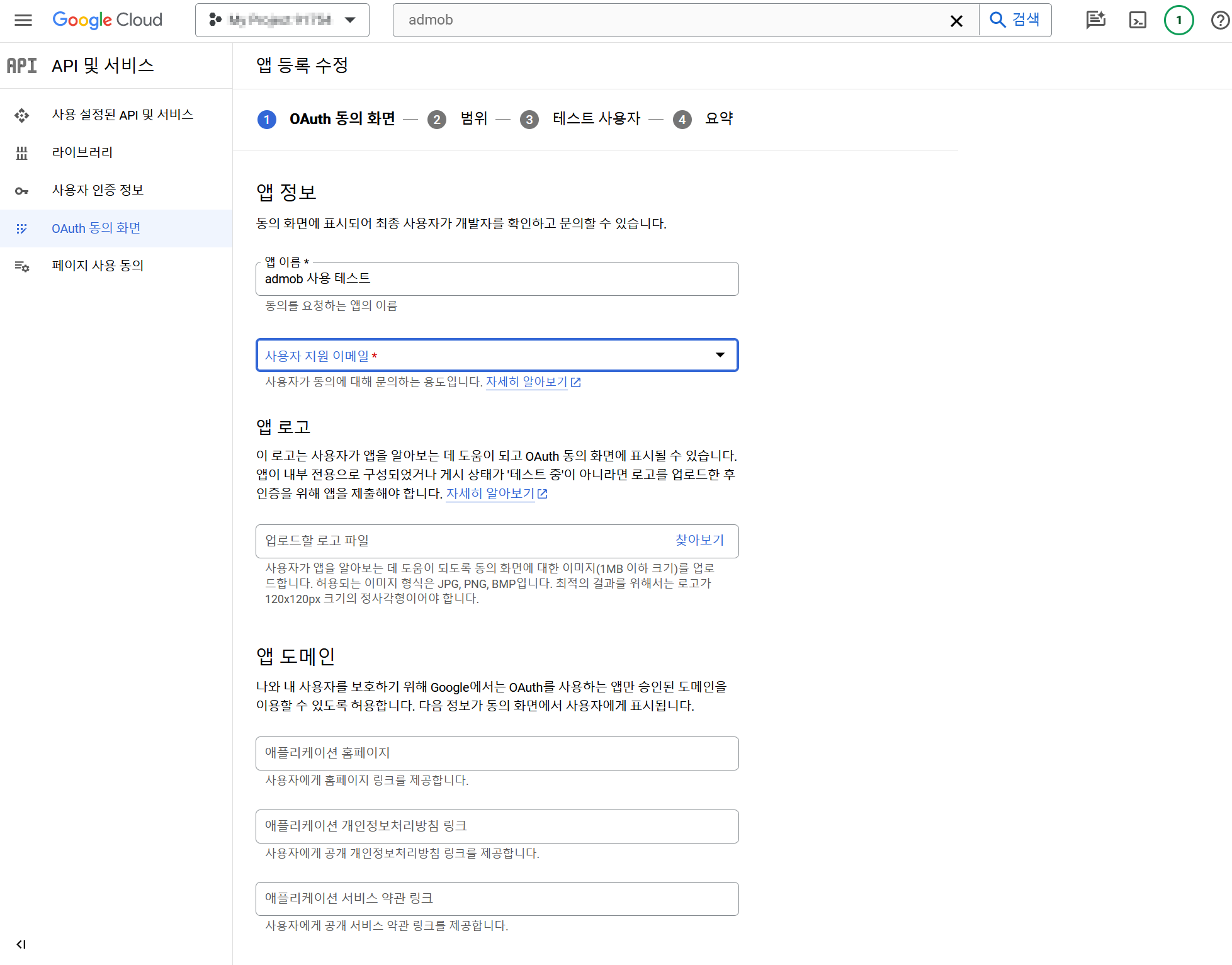 You do not need to set the range and test users. Please click "Save and Continue". ???+ note You do not need to register test users if the app has been released. You need to register as a test user if the app is still being tested before release. Only accounts registered as test users can be allowed to retrieve data through the AdMob API.
You do not need to set the range and test users. Please click "Save and Continue". ???+ note You do not need to register test users if the app has been released. You need to register as a test user if the app is still being tested before release. Only accounts registered as test users can be allowed to retrieve data through the AdMob API. 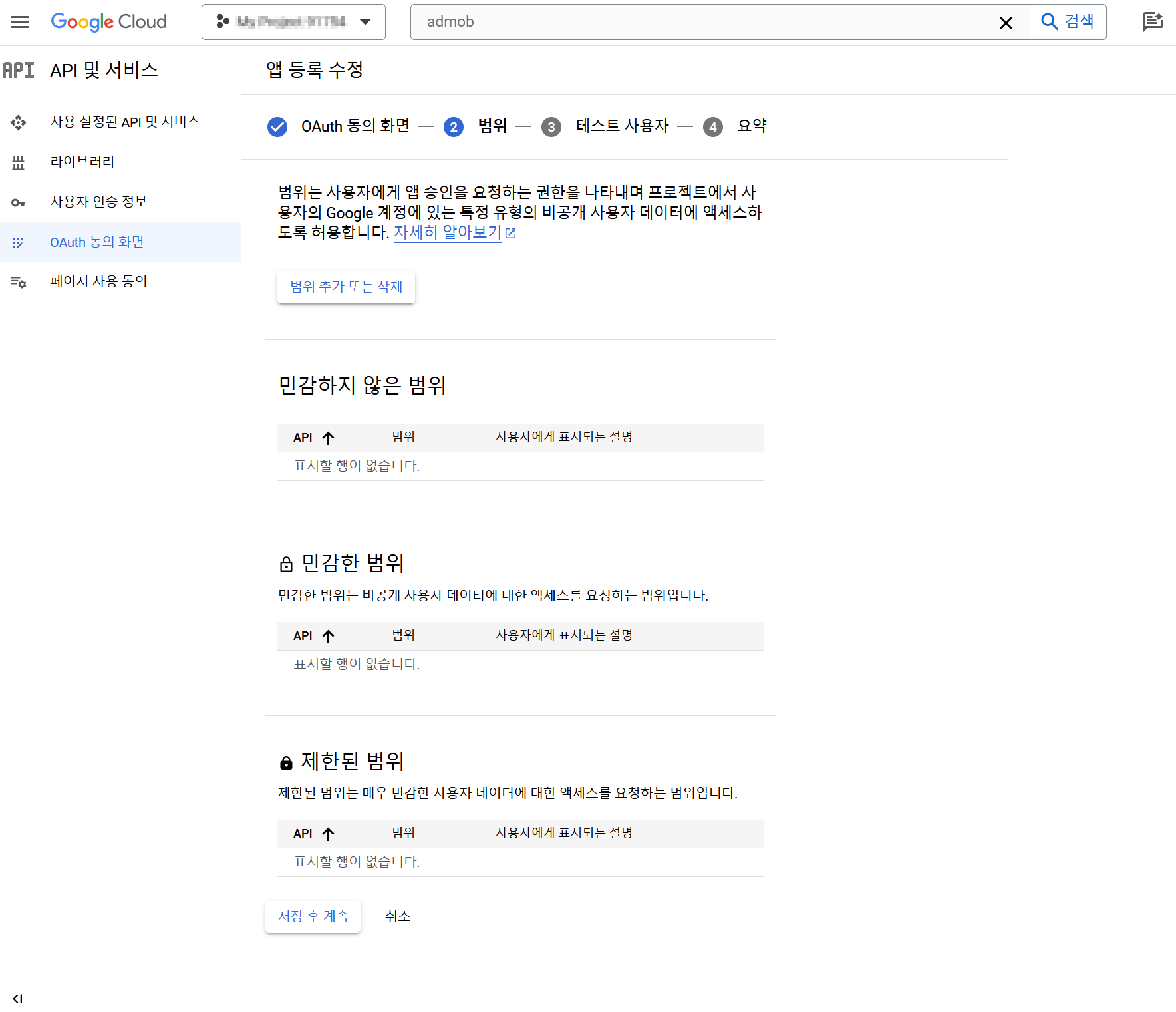
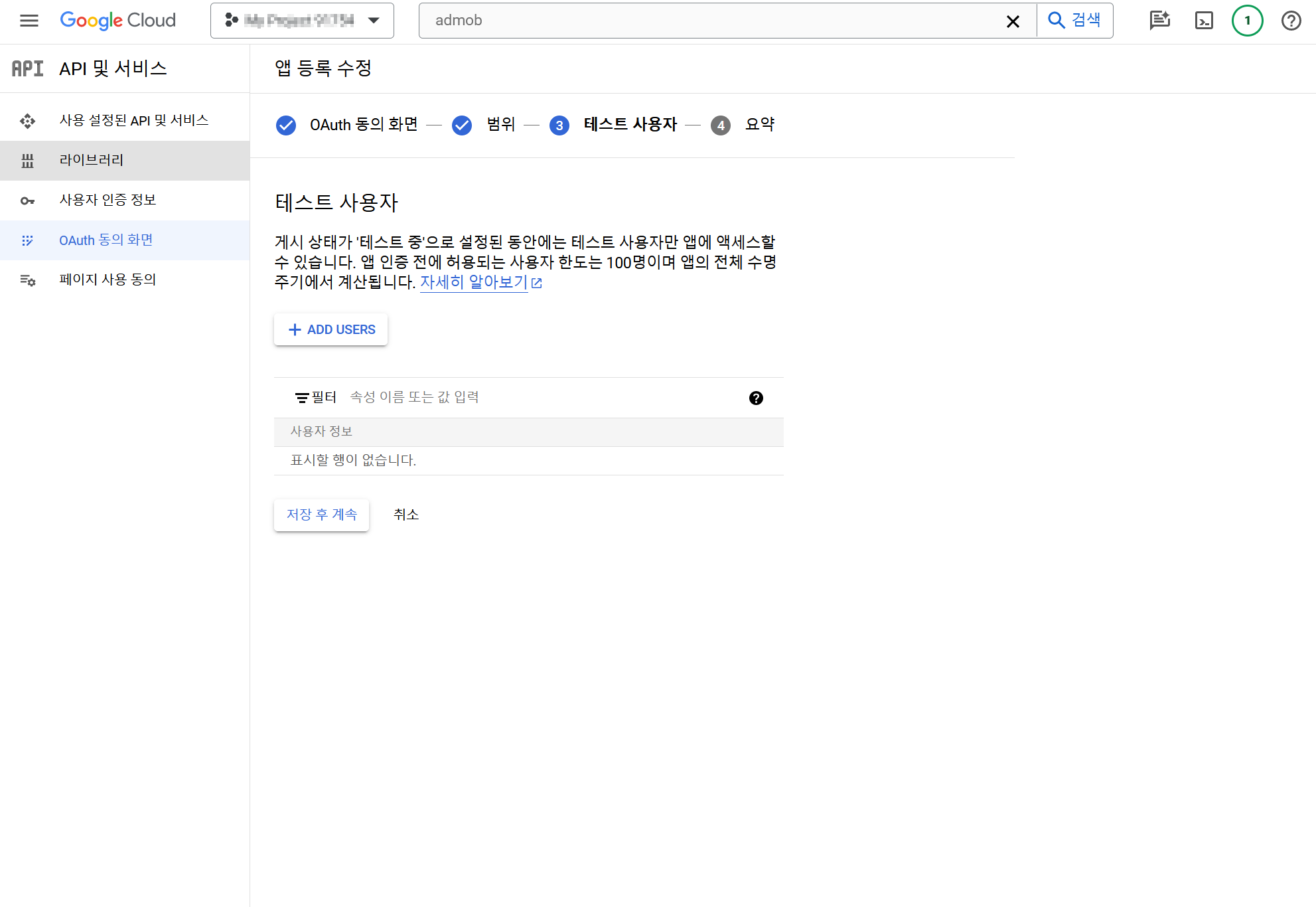 The consent screen configuration is complete. Now, let’s go create an Oauth client.
The consent screen configuration is complete. Now, let’s go create an Oauth client. 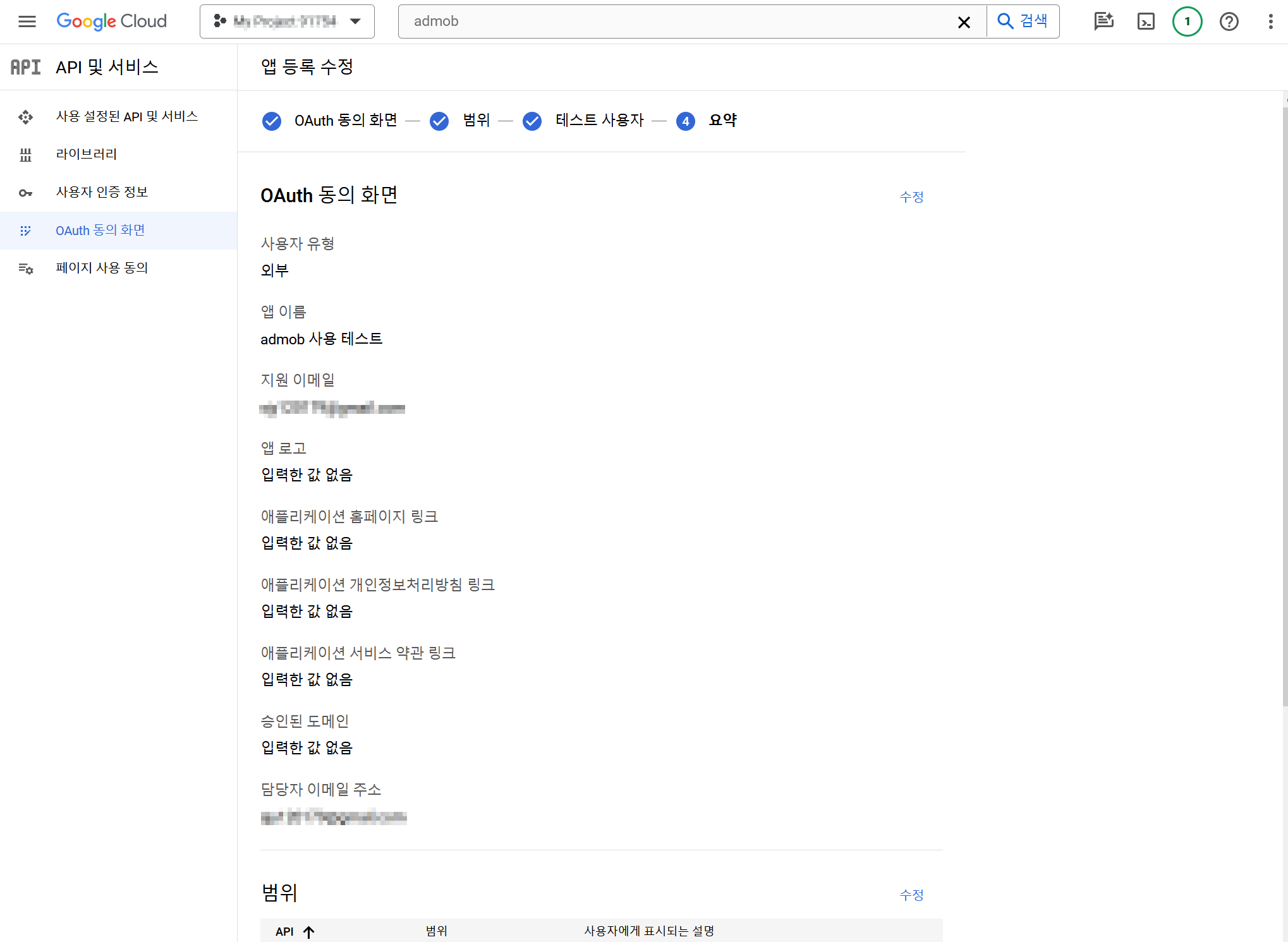
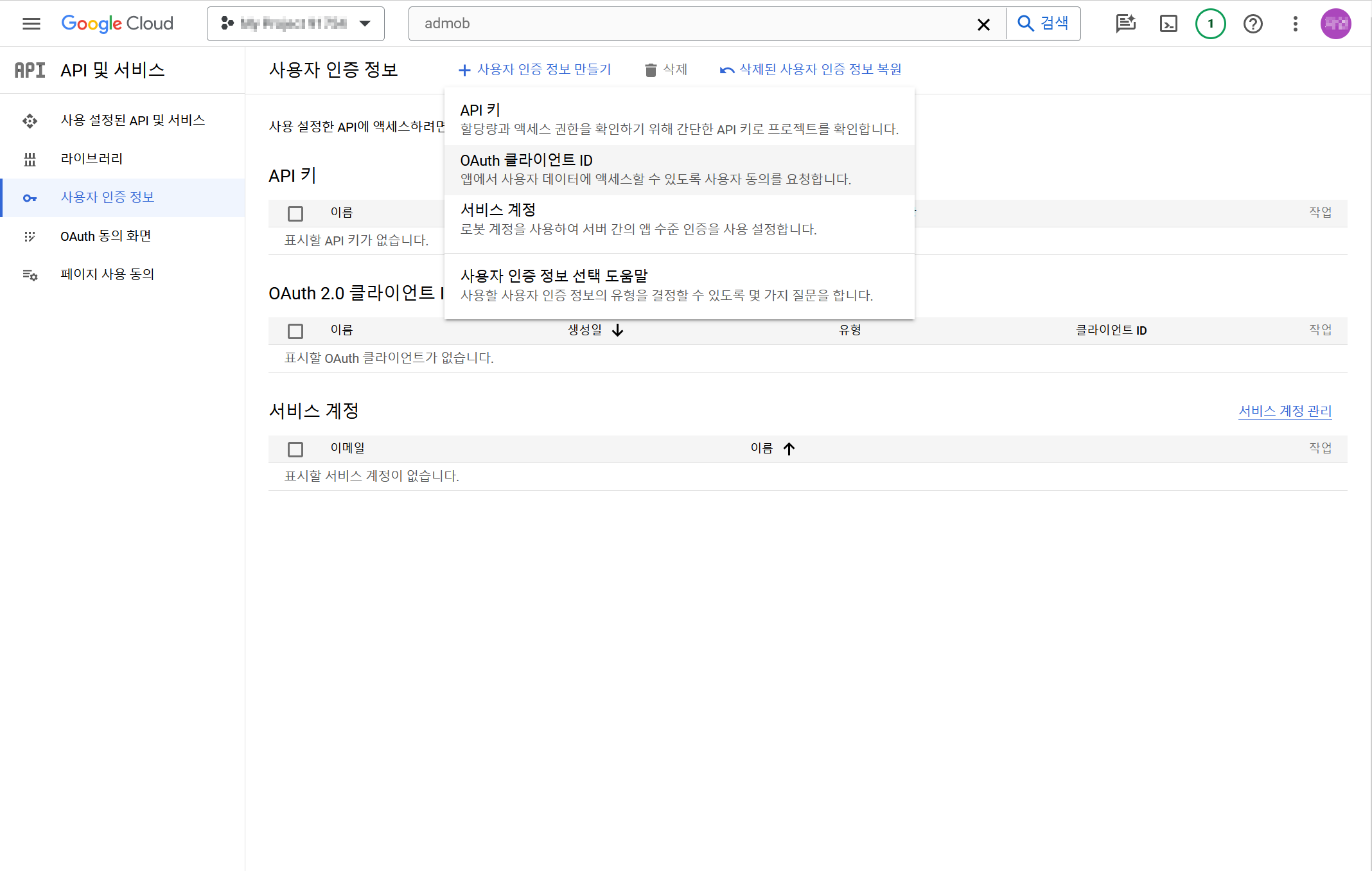 Select "Web Application" for the application type.
Select "Web Application" for the application type. 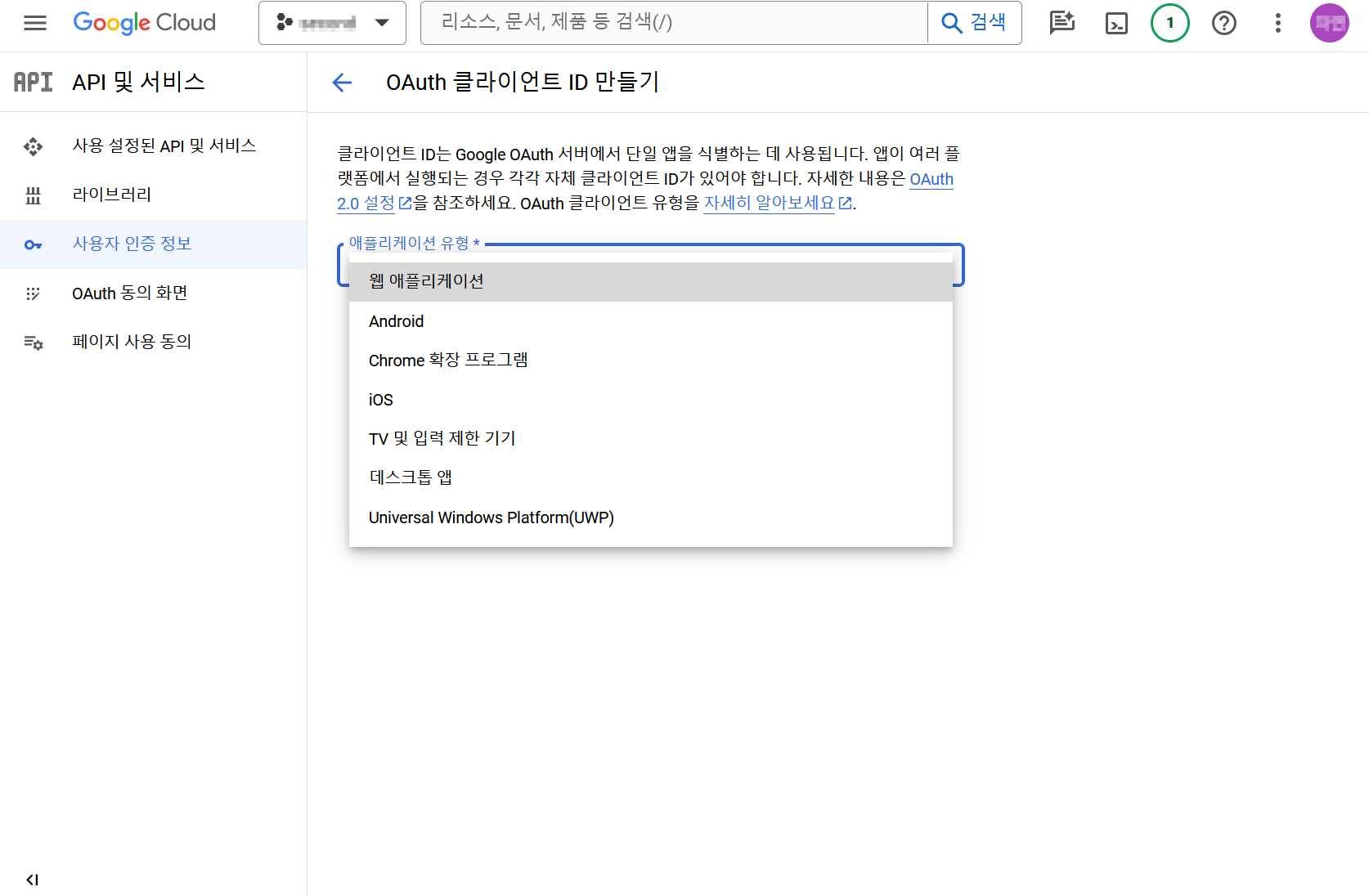 Enter "https://test-console-promotion.withhive.com/am/mediation/connect" in the approved redirect URI, then click "Create".
Enter "https://test-console-promotion.withhive.com/am/mediation/connect" in the approved redirect URI, then click "Create".  The Oauth client ID has been created.
The Oauth client ID has been created. 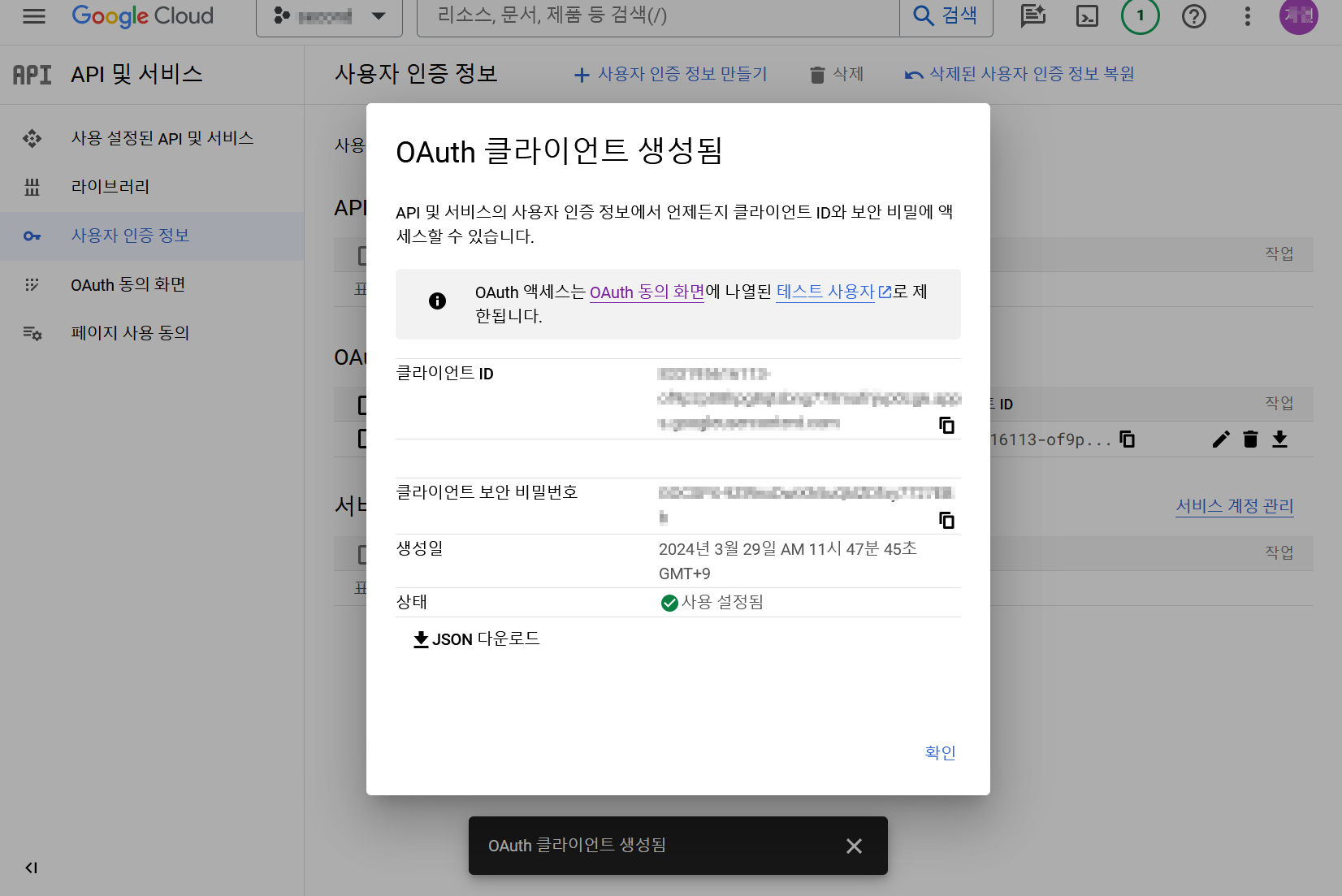 Download the web client json file created in User Authentication Information > Oauth 2.0 Client ID.
Download the web client json file created in User Authentication Information > Oauth 2.0 Client ID. 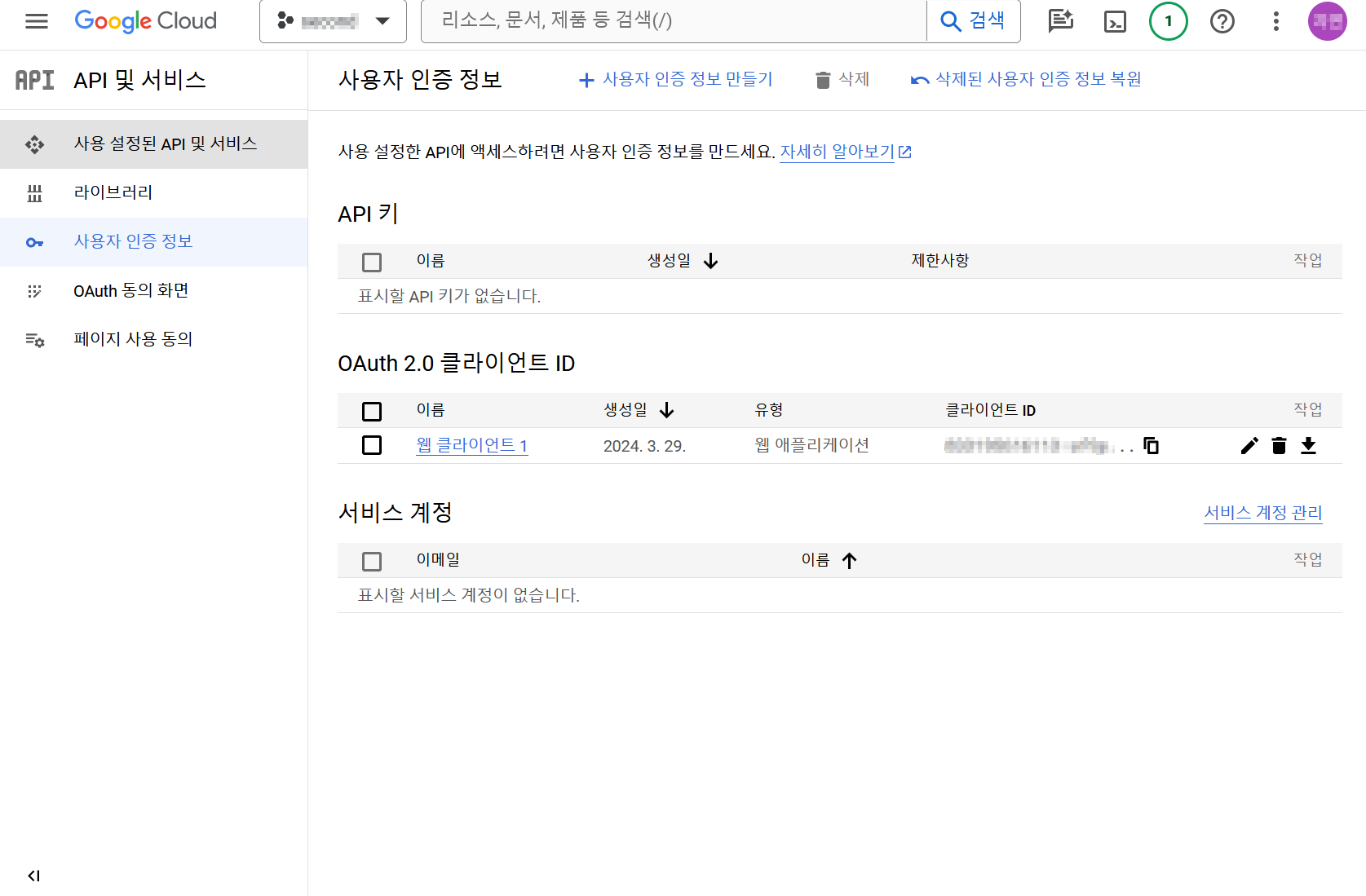
How to reconnect when the link expires¶
A token that can retrieve data is issued after connecting the AdMob API if you allow access. This token has a validity period, and it expires after the validity period and you can no longer retrieve data through the AdMob API. (The criteria for this validity period are unknown, so you can find out after it expires.)
Therefore, you need to set the access permission setting again to retrieve data. Please follow the instructions to set the access permission settings.
-
A pop-up window will be displayed where you can upload the json file and allow access. You can check the json file you uploaded previously in the pop-up window. Click "Next".
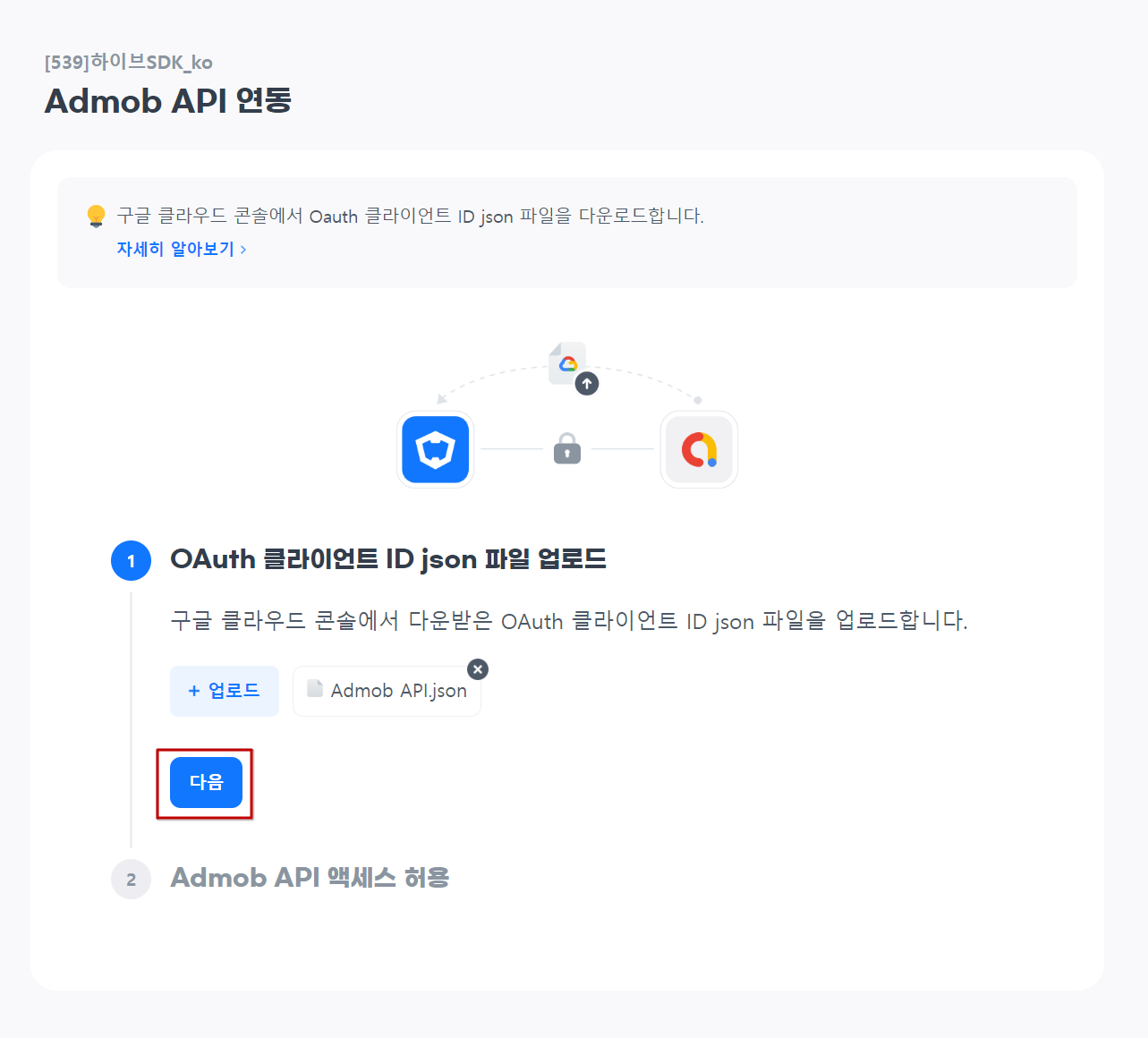
-
Click the "Allow Access" Button to proceed with the access permission settings. Once the access permission settings are complete, you can link again and retrieve data.
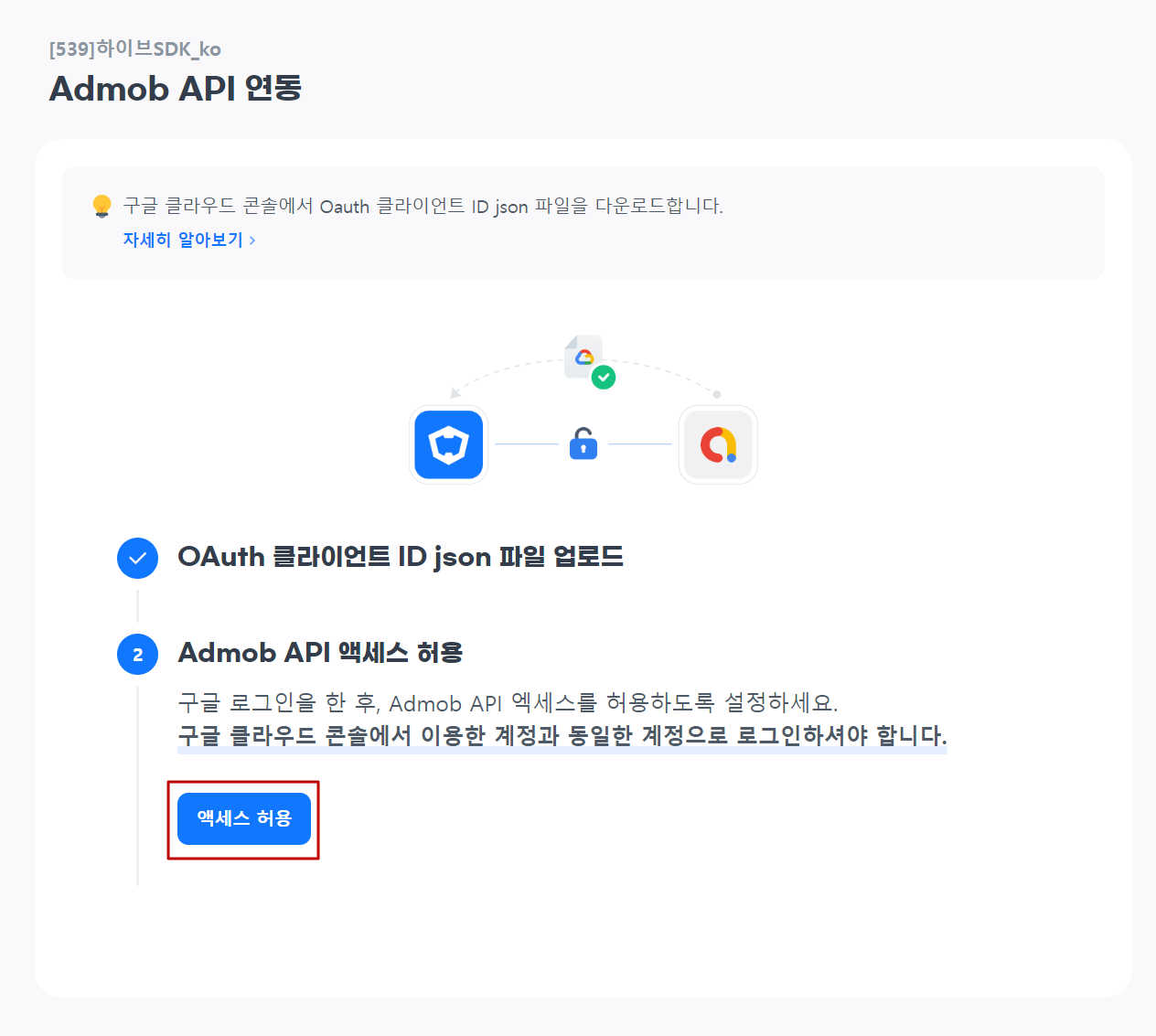
Note
Data is not sent to Analytics when the link is removed. All unsent data will be sent to Analytics when the link is reactivated, so you can check it in the Analytics menu after linking again.
Admob API Integration Failure Cases¶
Even if the OAuth Client ID is correct, integration failure notifications may appear if certain settings are missing. Review the failure cases below and complete the necessary setup.
1. Failure to Register an Authorized Redirect URI in Google Cloud Console - Navigate to Google Cloud Console > API & Services > Credentials > Edit OAuth 2.0 Client ID and add https://console-promotion.withhive.com/am/mediation/connect under Authorized Redirect URIs. (View Detailed Guide) 
2. App Not Yet Published in the Market and Test User Not Registered in Google Cloud Console - Enter account information in Google Cloud Console > API & Services > OAuth Consent Screen > Test Users. (View Detailed Guide) 
3. Mismatch Between Account Used in Google Cloud Console and Account Used for Access Authorization
- Ensure the account that issued the OAuth Client ID in Google Cloud Console matches the account used for access authorization in the Hive Console.
4. Admob API Not Enabled in Google Cloud Console
- Navigate to Google Cloud Console > API & Services > Admob API > Product Details and set it to “Enable.” (View Detailed Guide) 
5. Admob Console Settings Not Configured Despite Proper Google Cloud Console Setup - If the Admob Console does not have an App ID or Ad Unit ID created, integration failure notifications will appear. Please create the App ID and Ad Unit ID in the Admob Console.(View Detailed Guide)
Check report data¶
You can check the data exposed through AdMob API link by going to Console > Analytics > Comprehensive Indicators > All Indicators > Ad Indicators > Daily Ad Summary.
Link ADforus¶
Start¶
-
Select a game by going to Console > Adiz > AdMob Settings. Click the sentence "Are you using ADforus?" at the bottom of the screen to display the sheet for connecting ADforus.
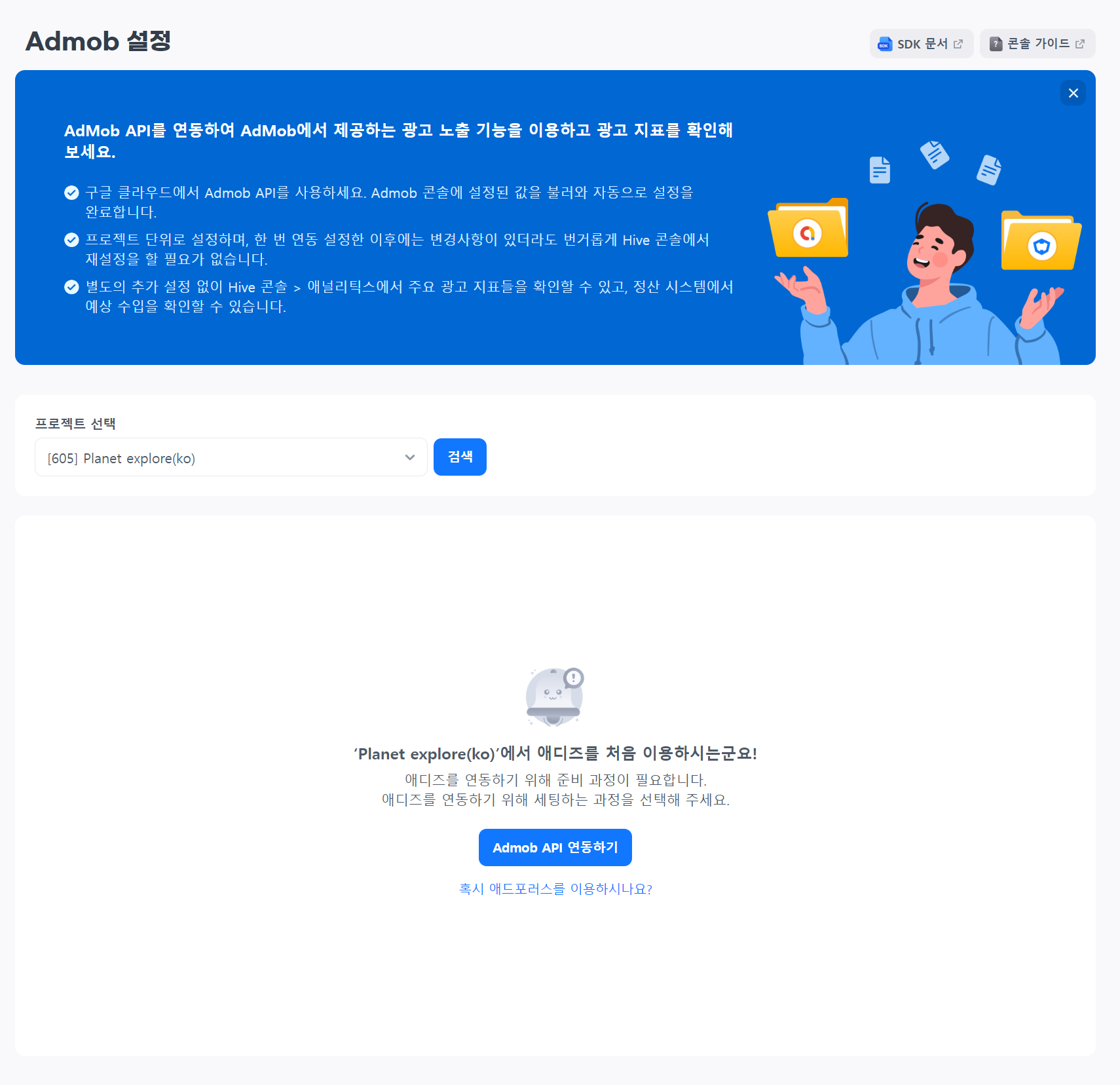
-
Enter the AdMob App ID to connect to the selected Hive App ID.
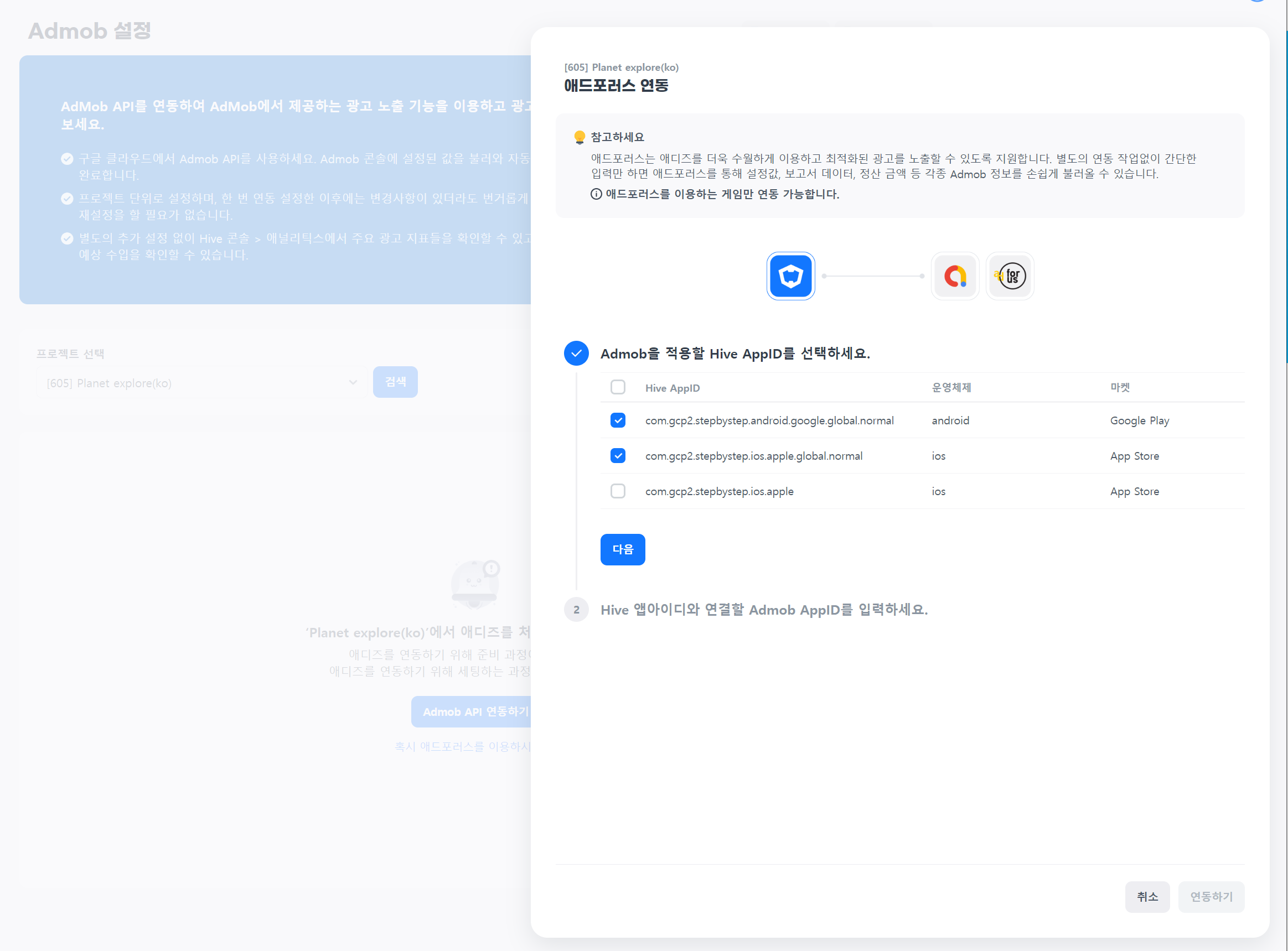
-
ADforus link has been completed. You will automatically be moved to the management page, and you can check the connected ad unit ID.
Manage AdMob information¶
After linking is complete, you can check the AdMob App ID and ad unit ID retrieved from the AdMob console.
Additional Linking
Once ADforus linking is complete, you can check the ad unit ID in the console in your account.
First, select the Hive App ID, then enter the AdMob App ID value in the "Linked AdMob App ID" input field. After entering, click the "OK" Button.
The ad unit ID linked to the entered AdMob App ID will be automatically displayed. 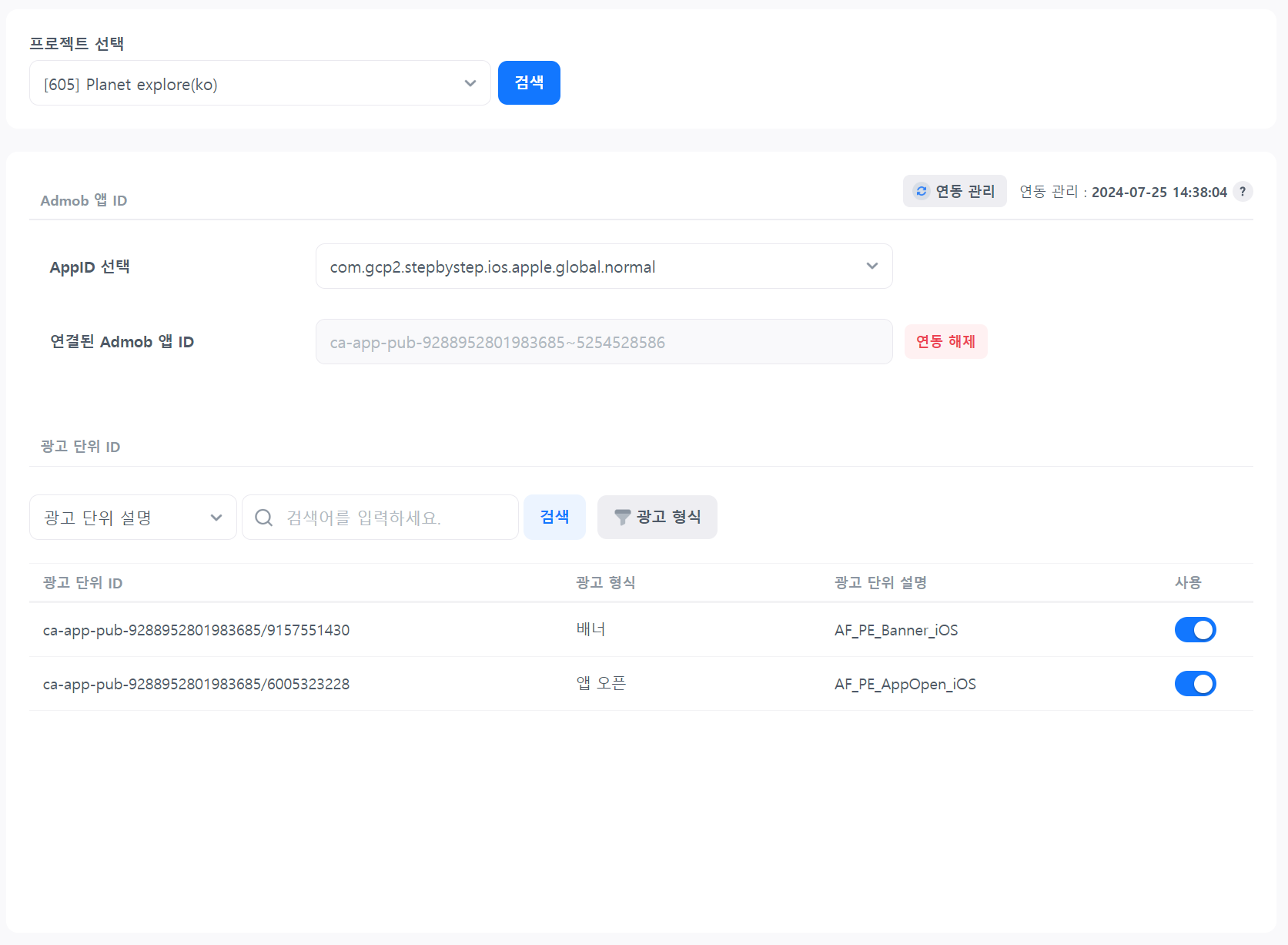
Remove Link
You can remove the link between the Hive App ID and AdMob App ID. To link with another App ID, remove the existing link.
You can remove the link by clicking the "Remove Link" Button. When the AdMob App ID link is removed, the link with the ad unit ID will also be removed. 
The unlinked Hive App ID can be linked with another AdMob App ID.
Ad Unit ID Usage Settings
To remove the ad unit ID, turn off the "Use" toggle. You cannot request ads with a disabled ad unit ID. To reactivate it, change it to the "Use" status. 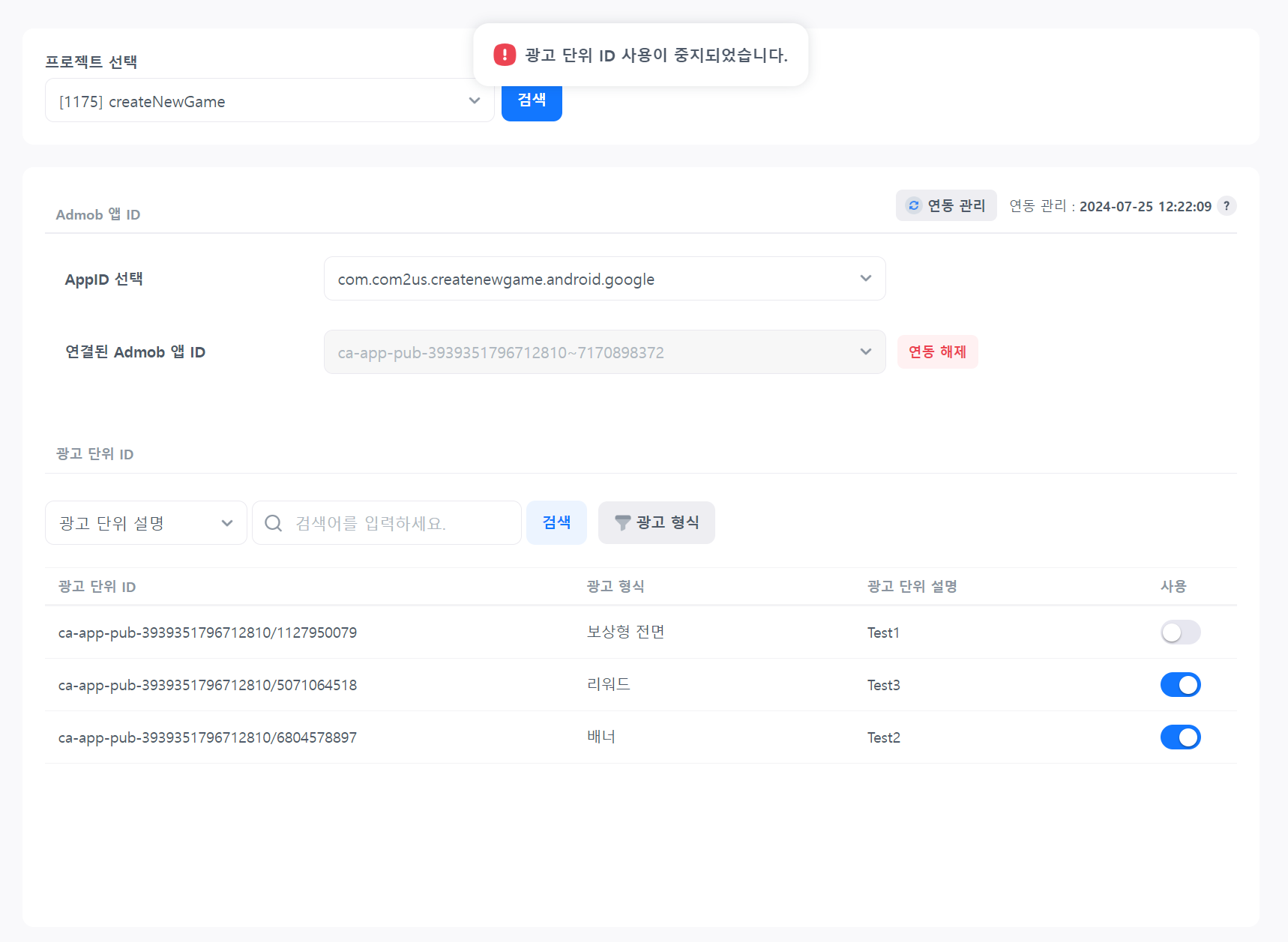
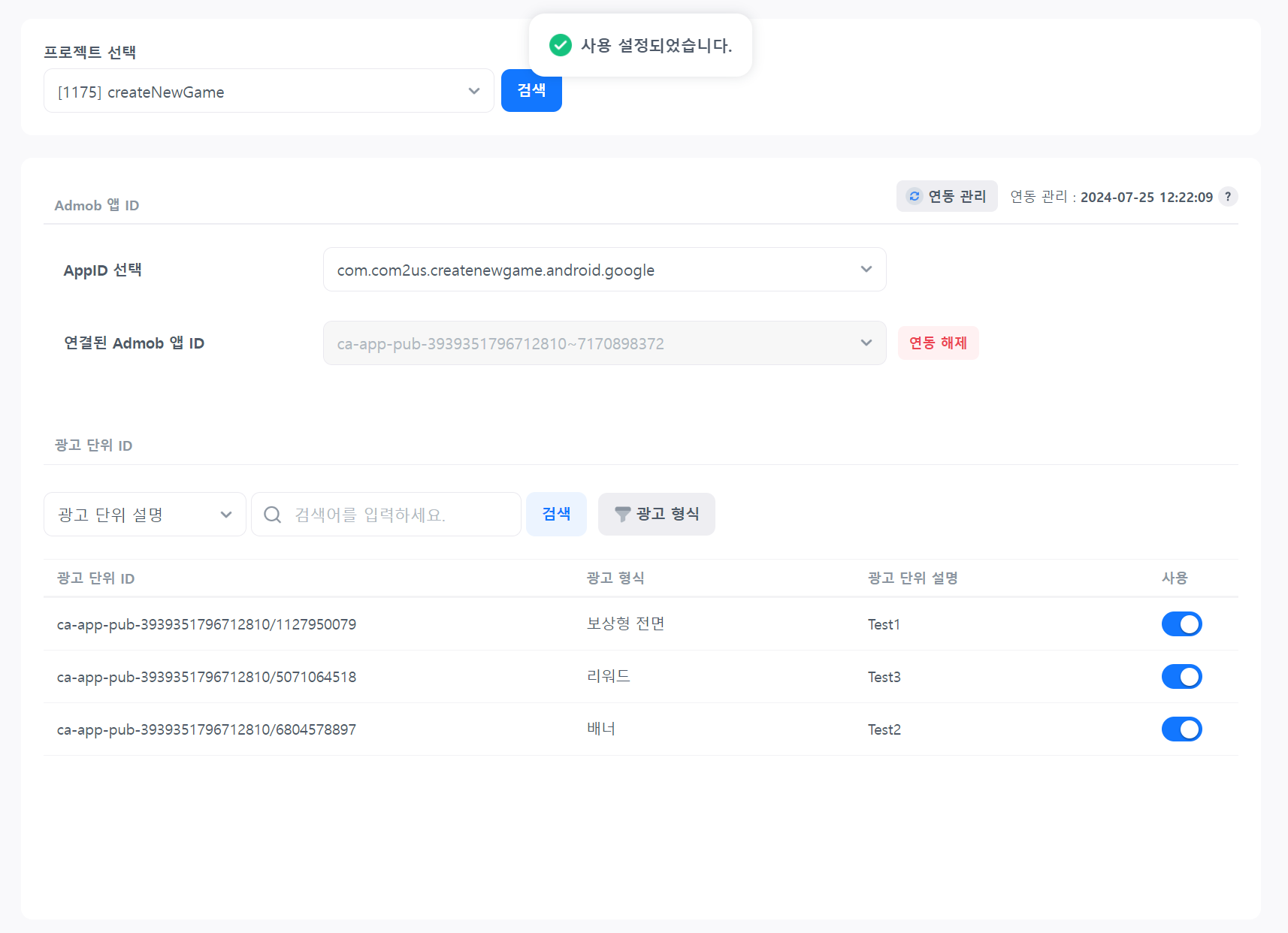
Check report data¶
You can check the data exposed to ads through linking with ADforus by going to Console > Analytics > Comprehensive Indicators > All Indicators > Ad Indicators > Daily Ad Summary.

